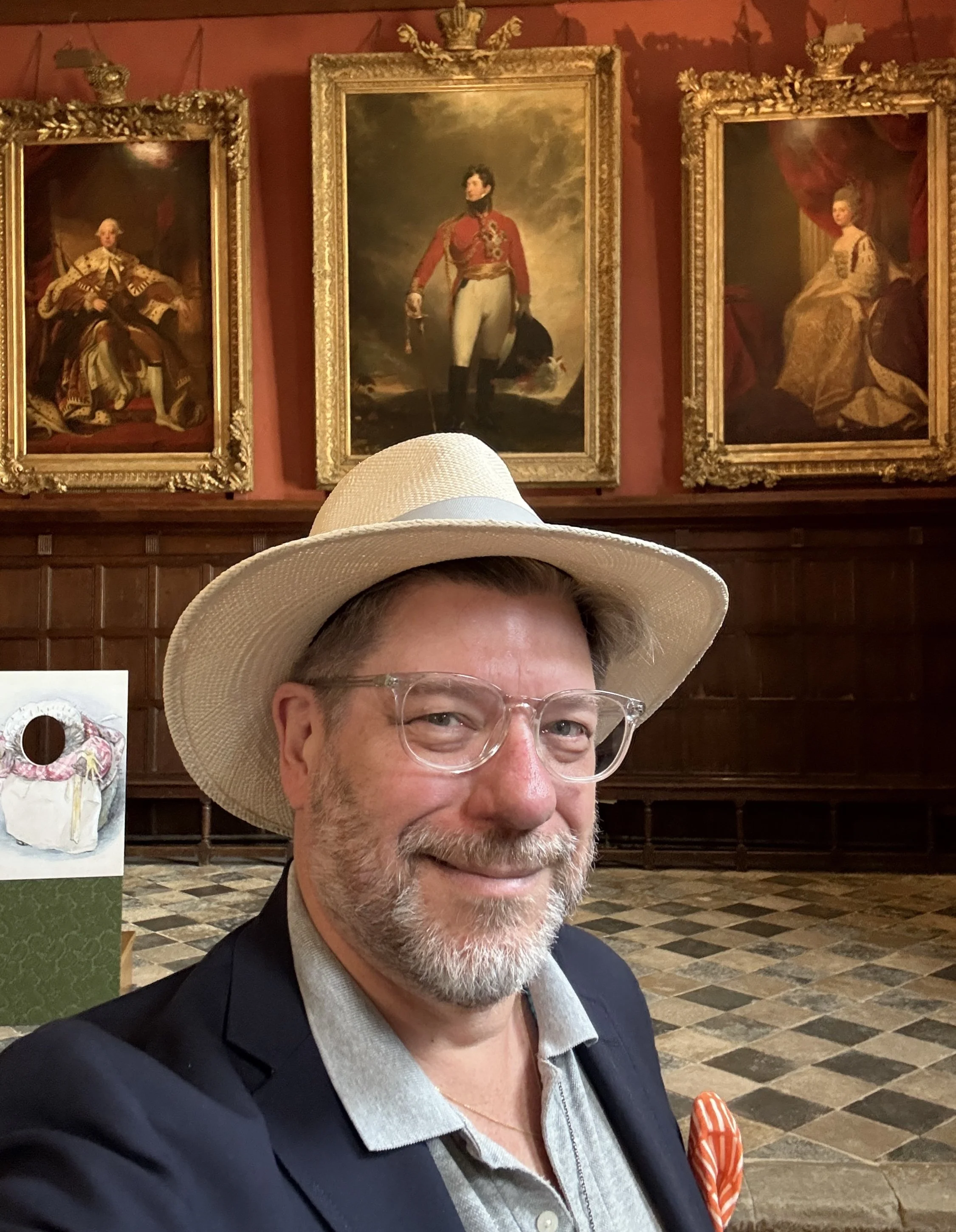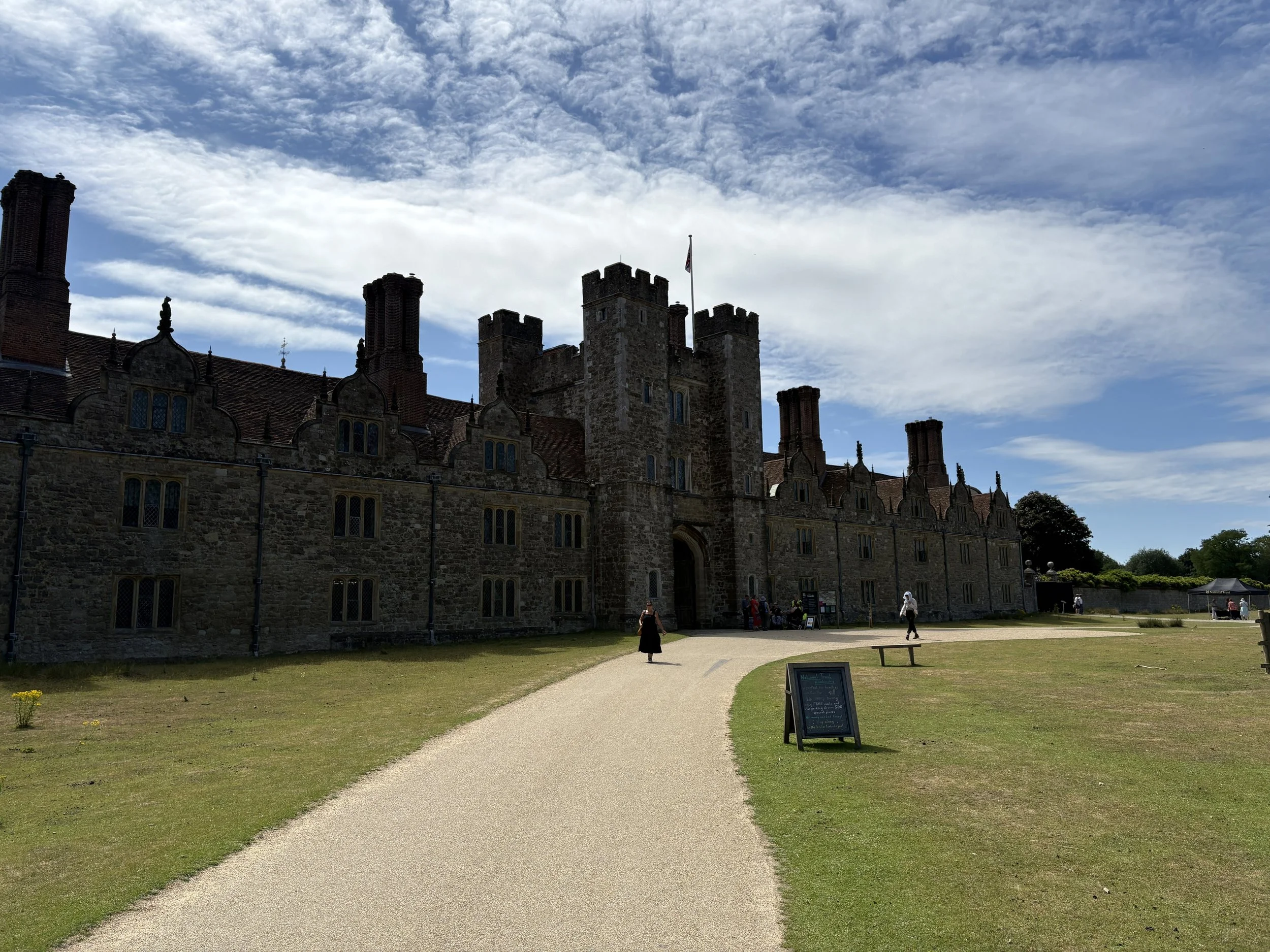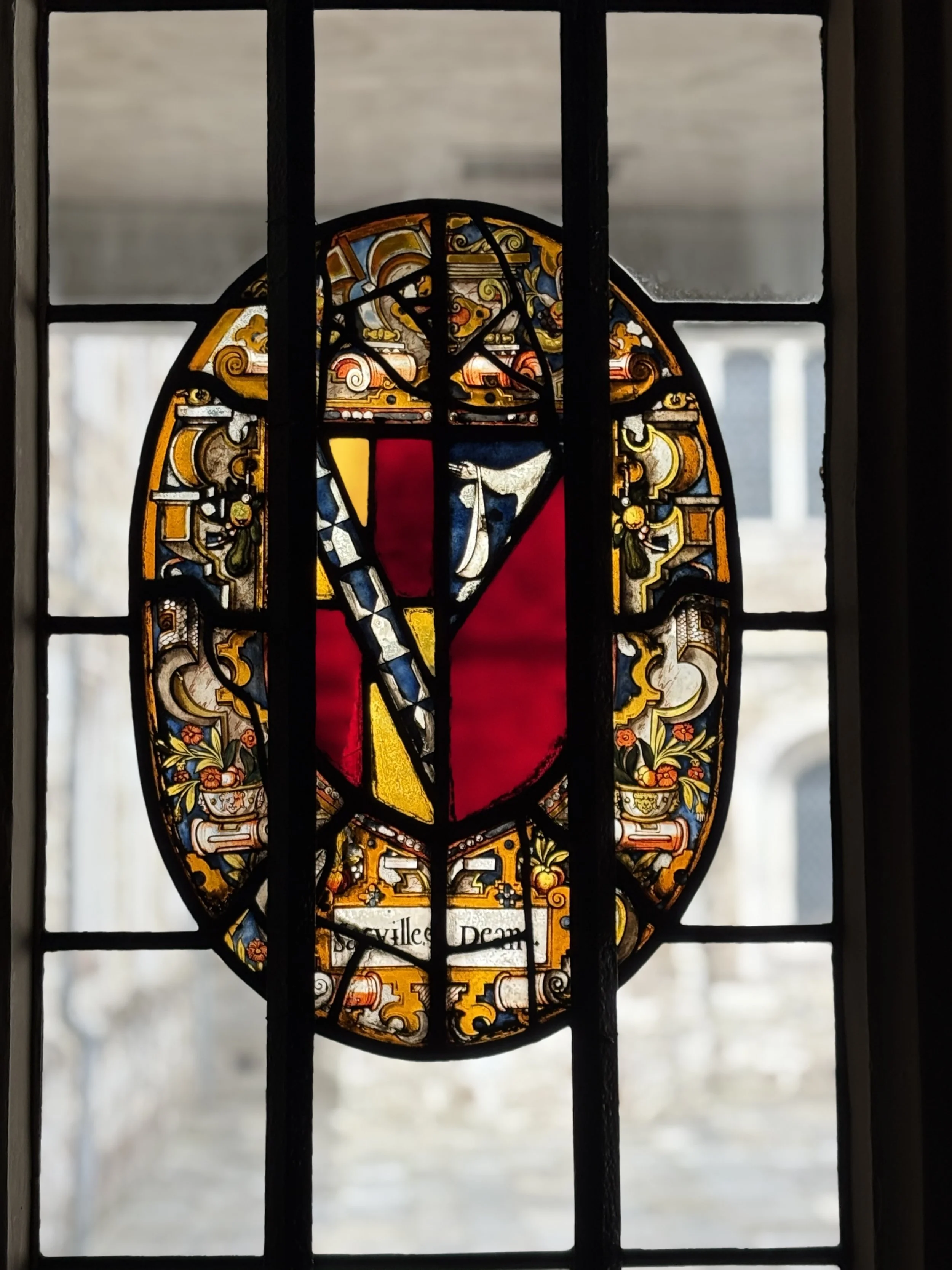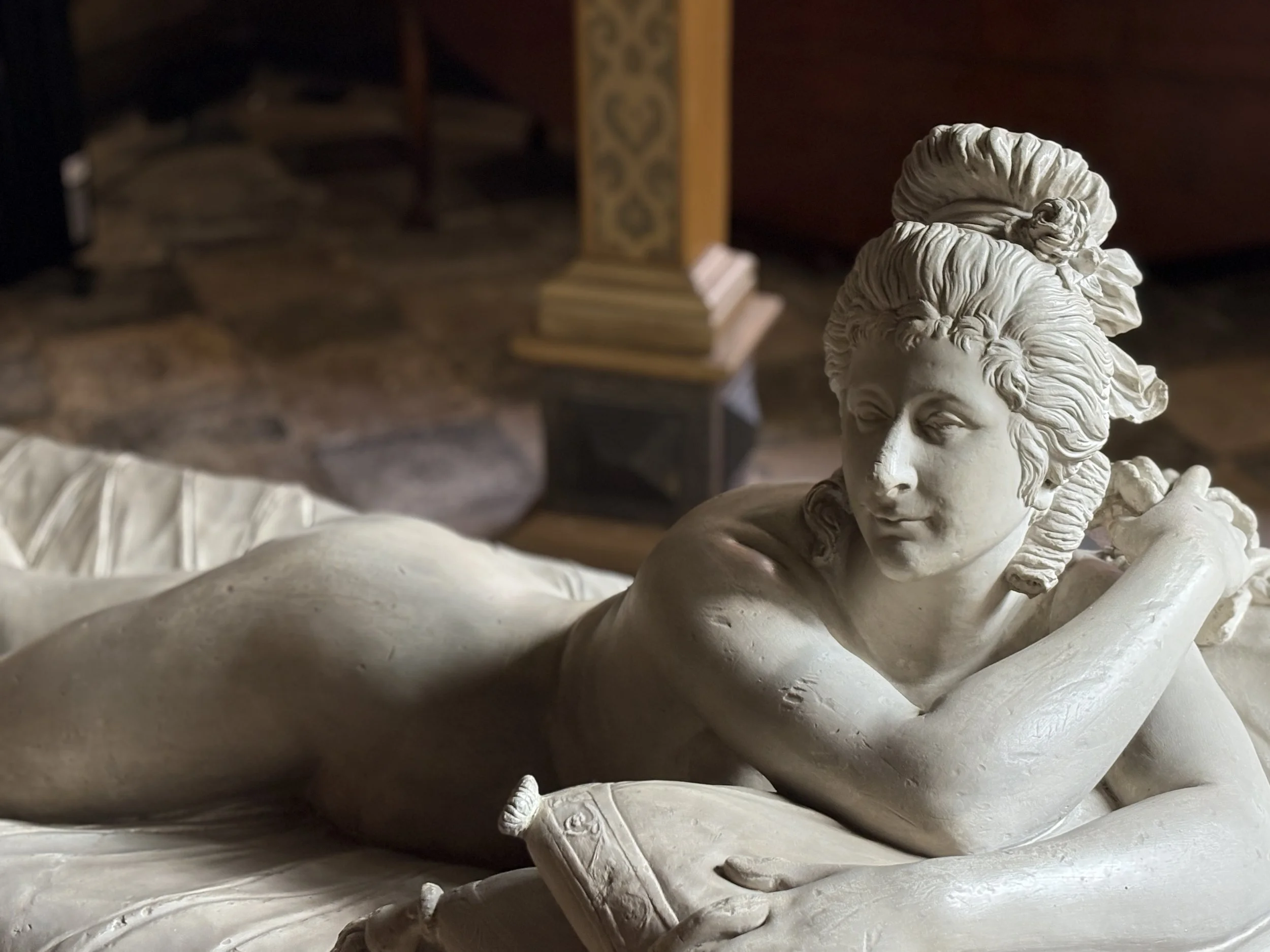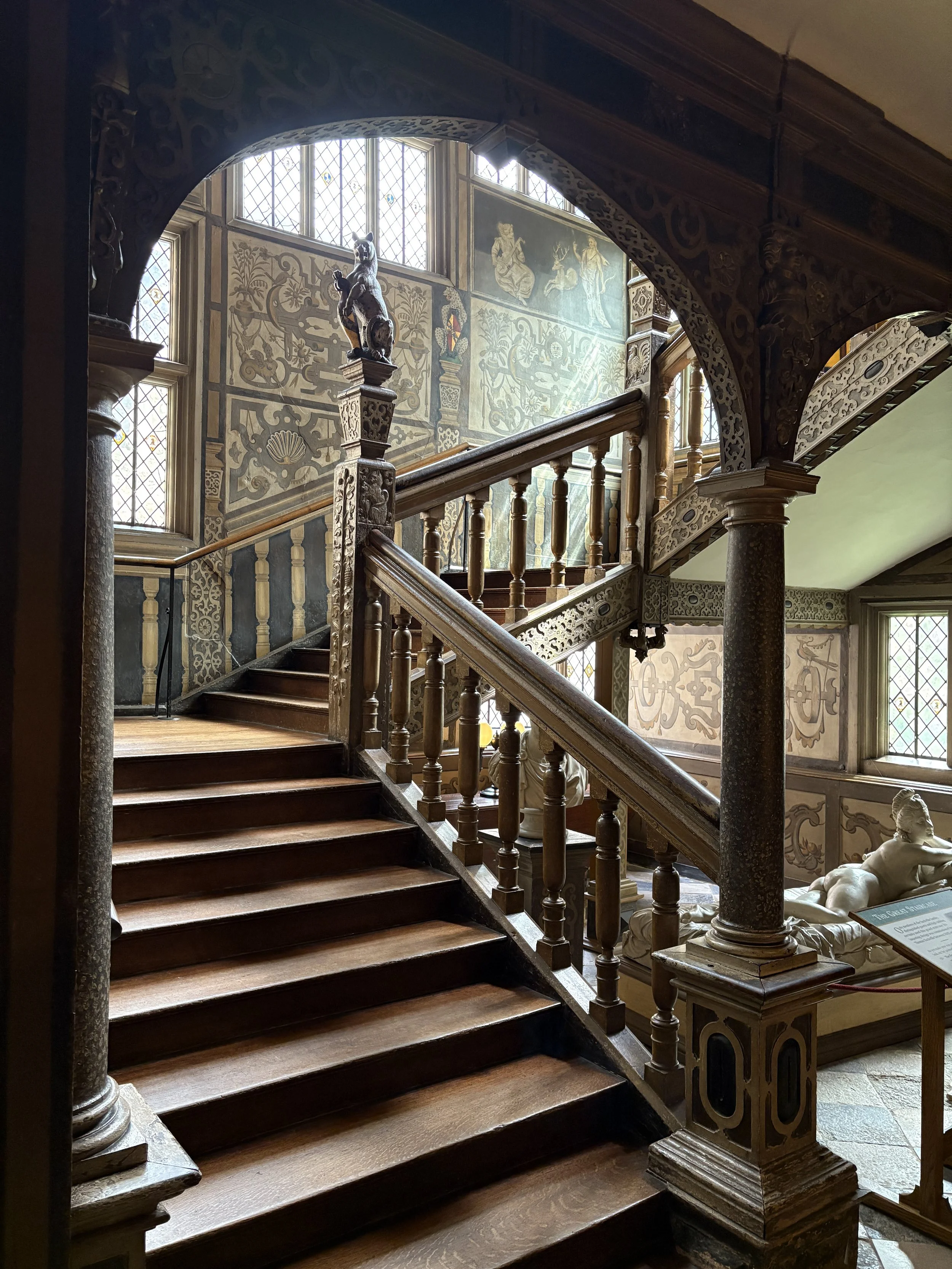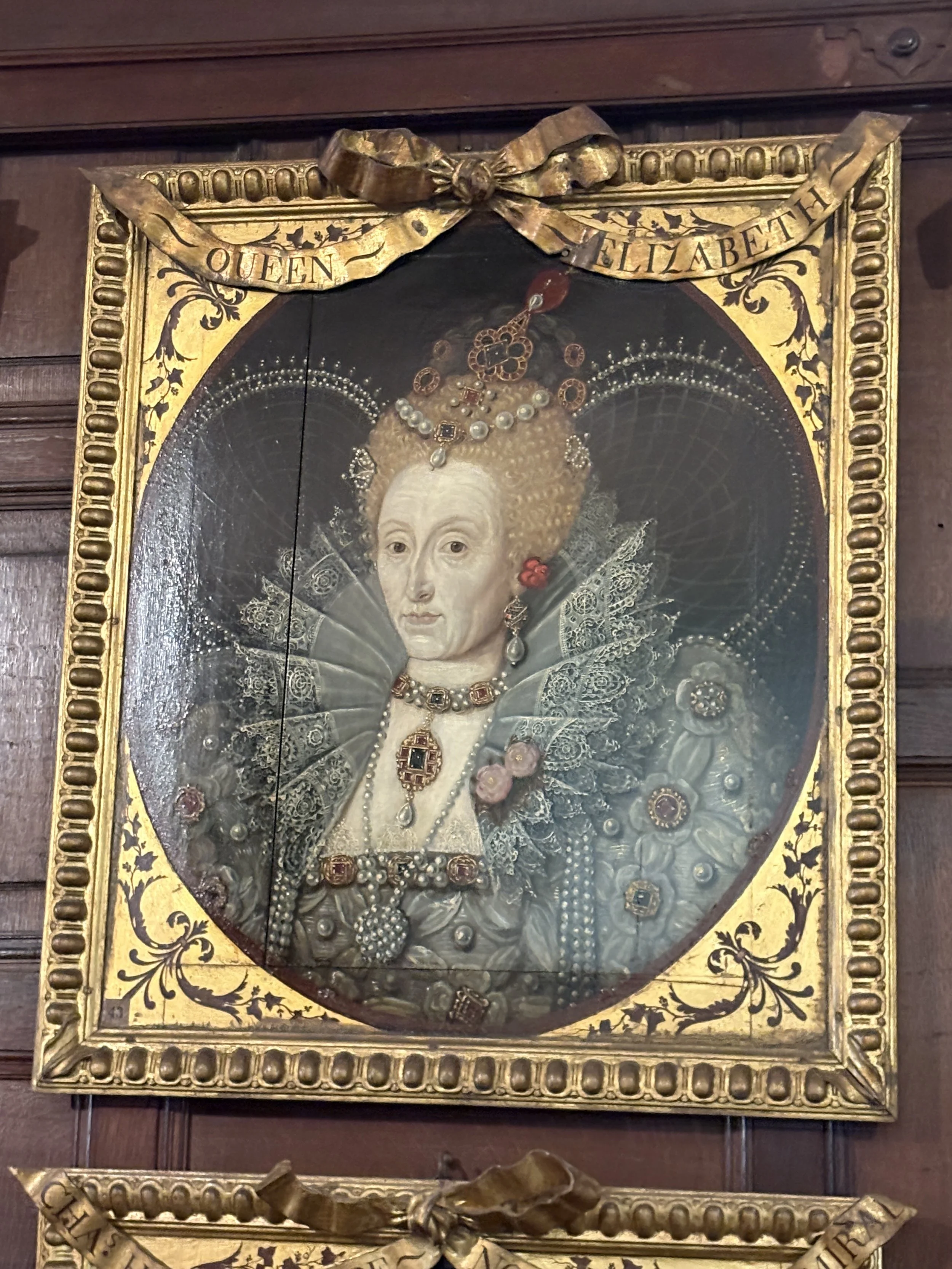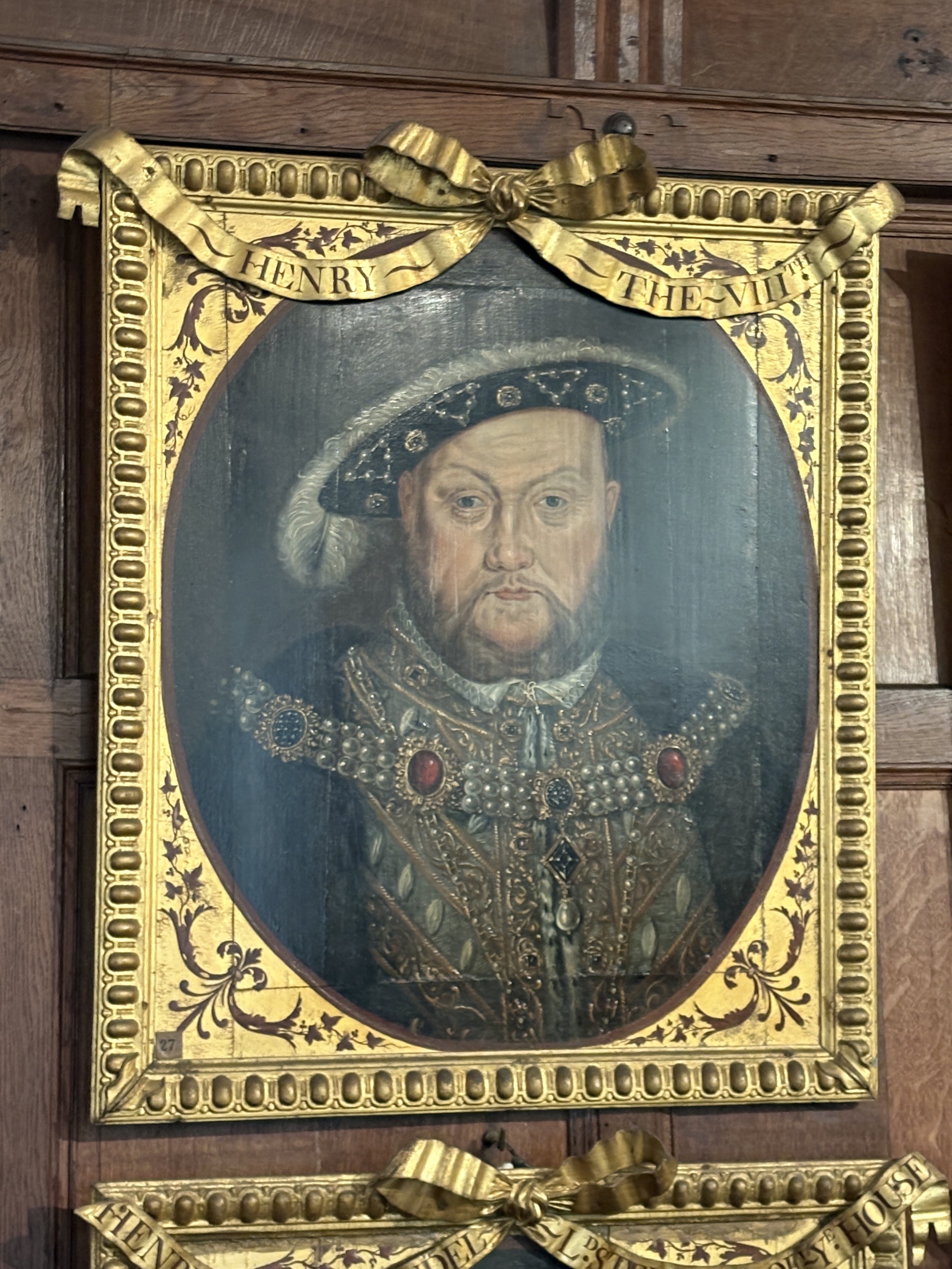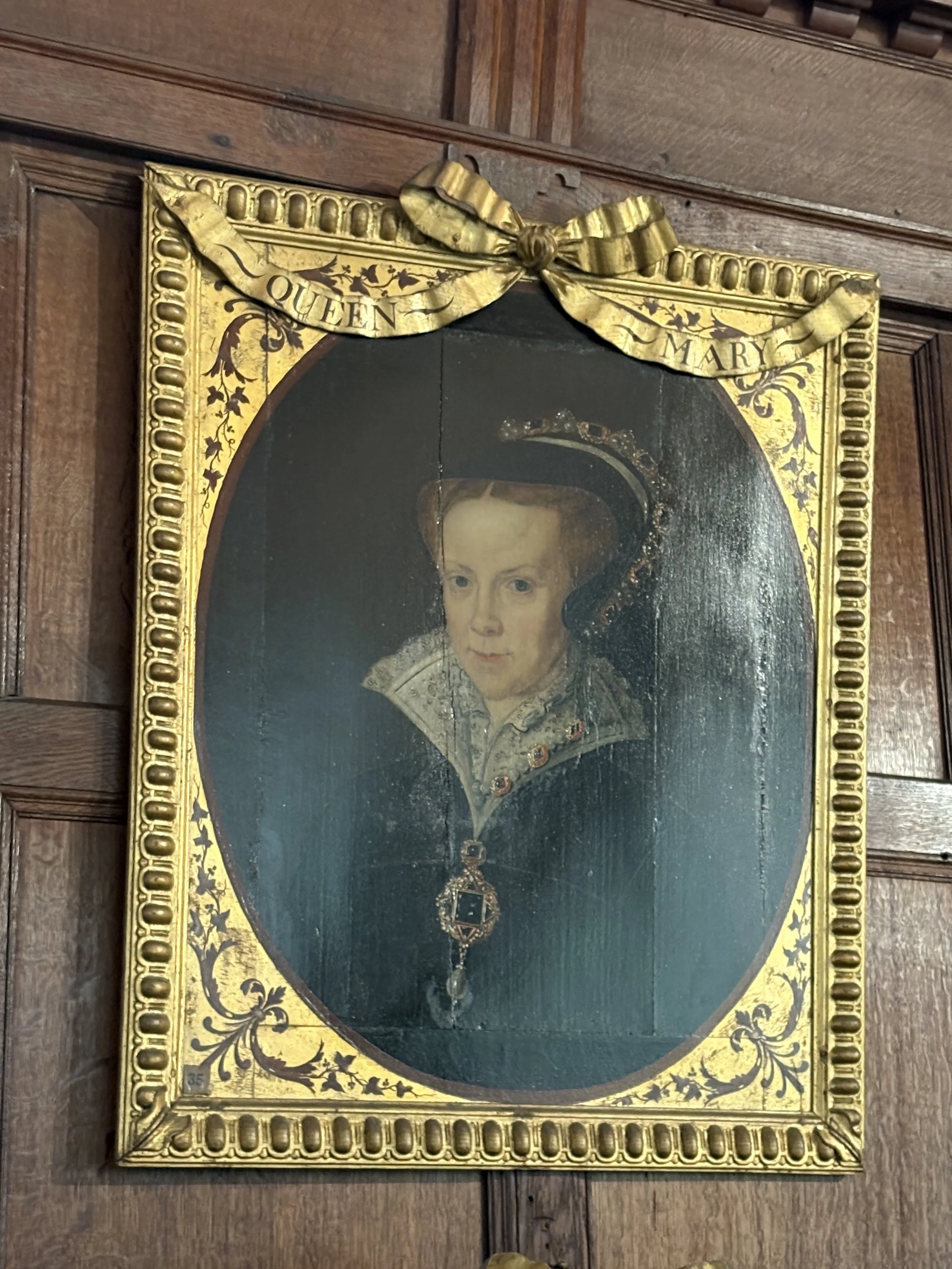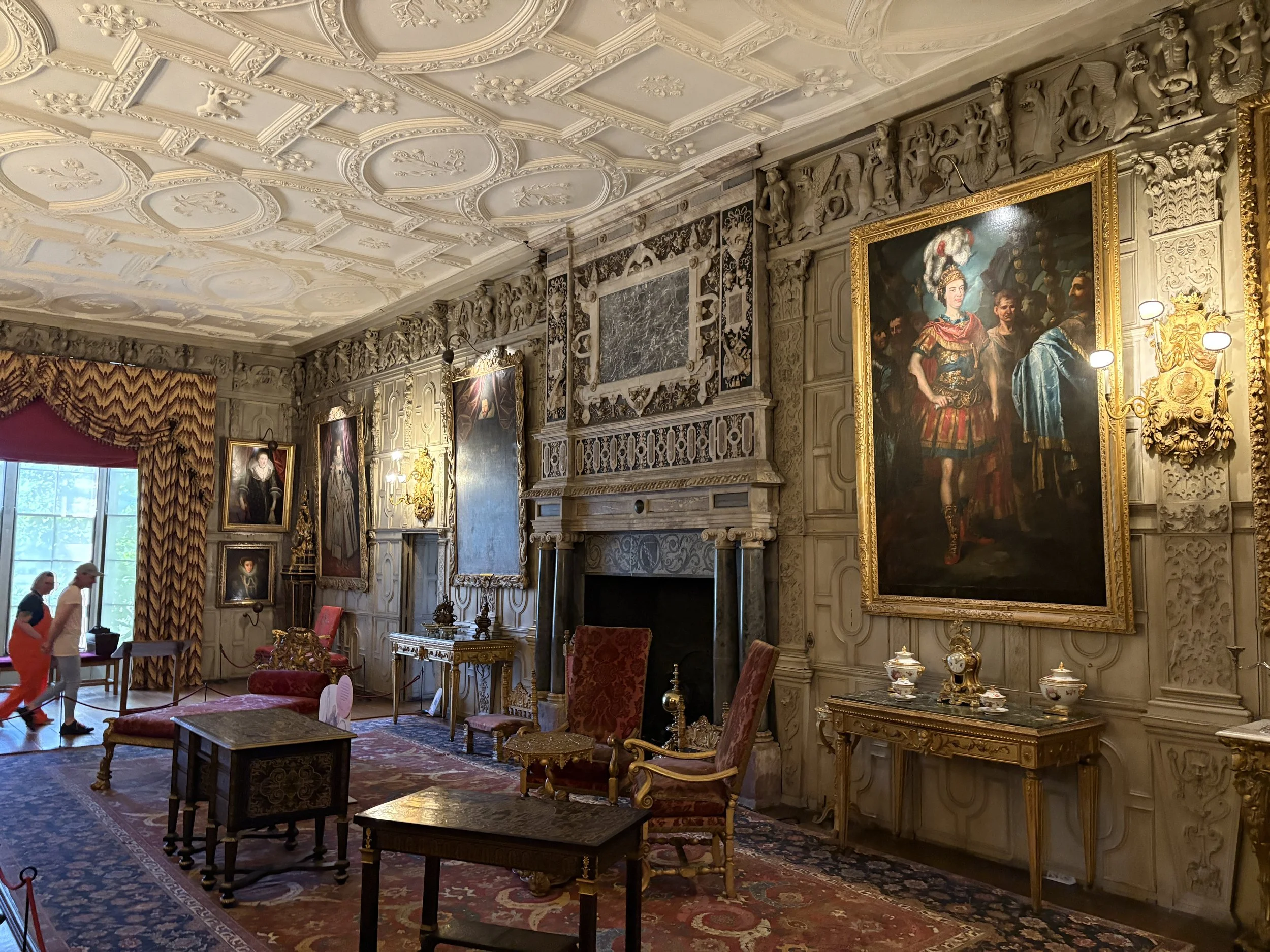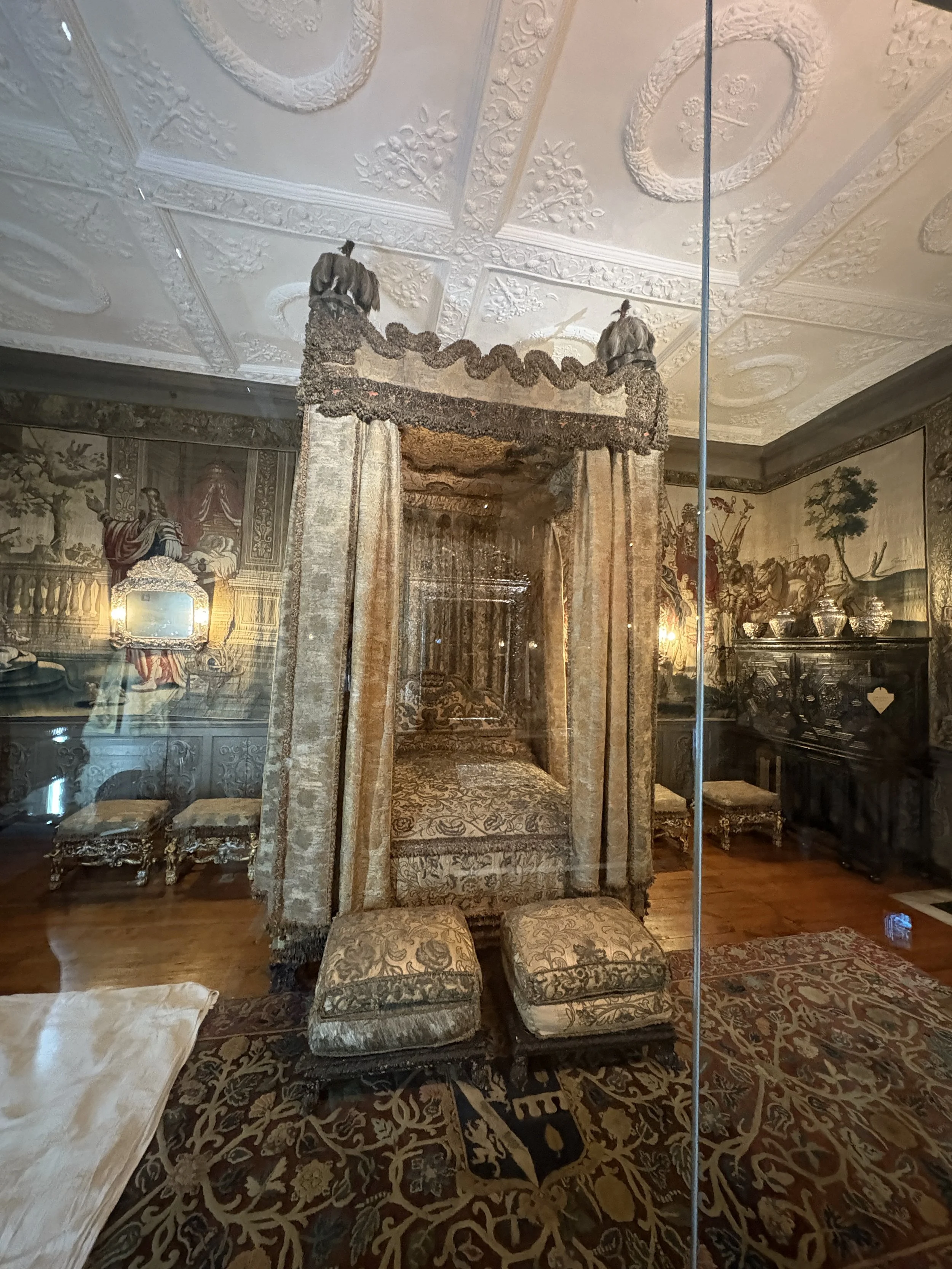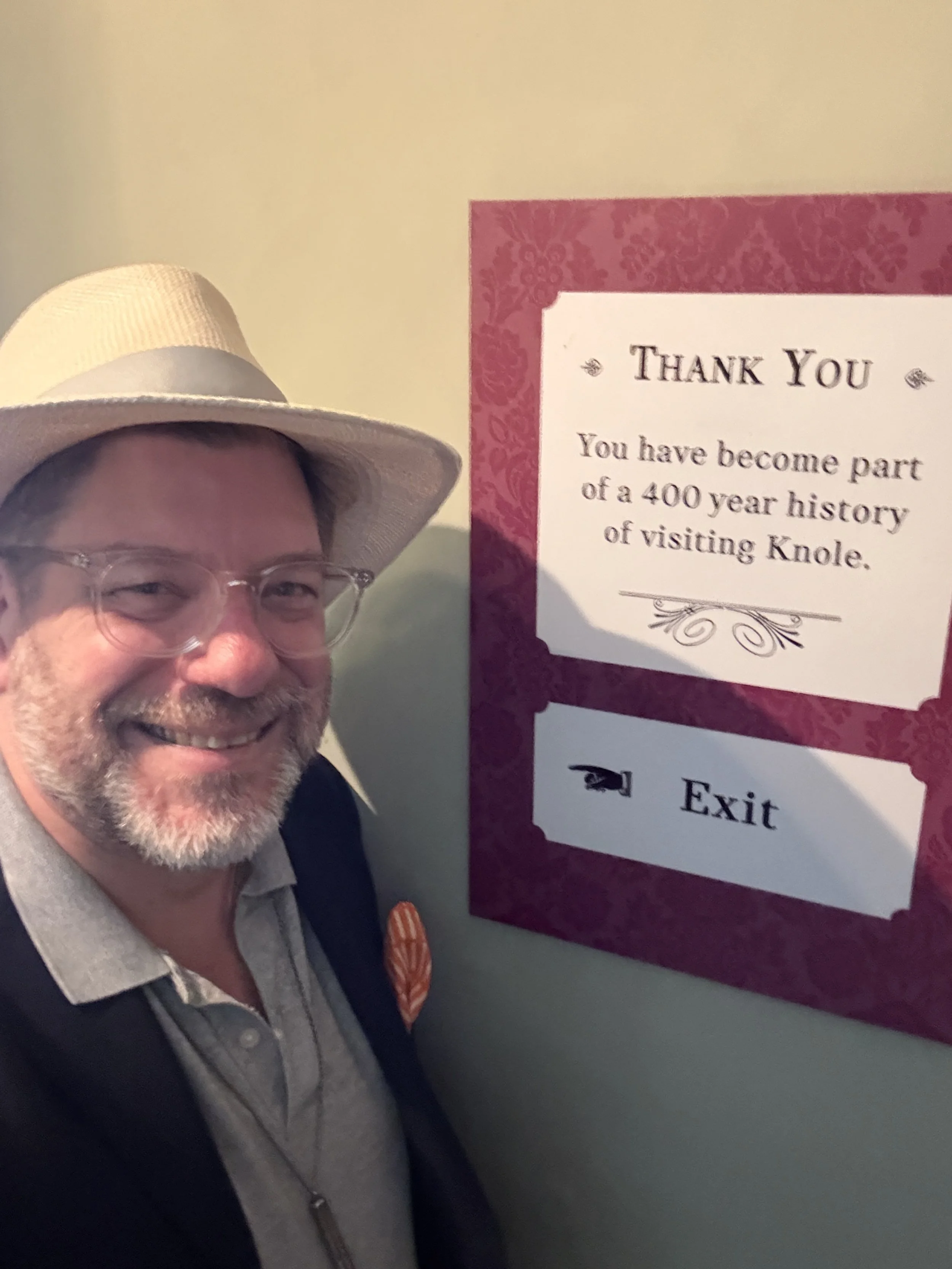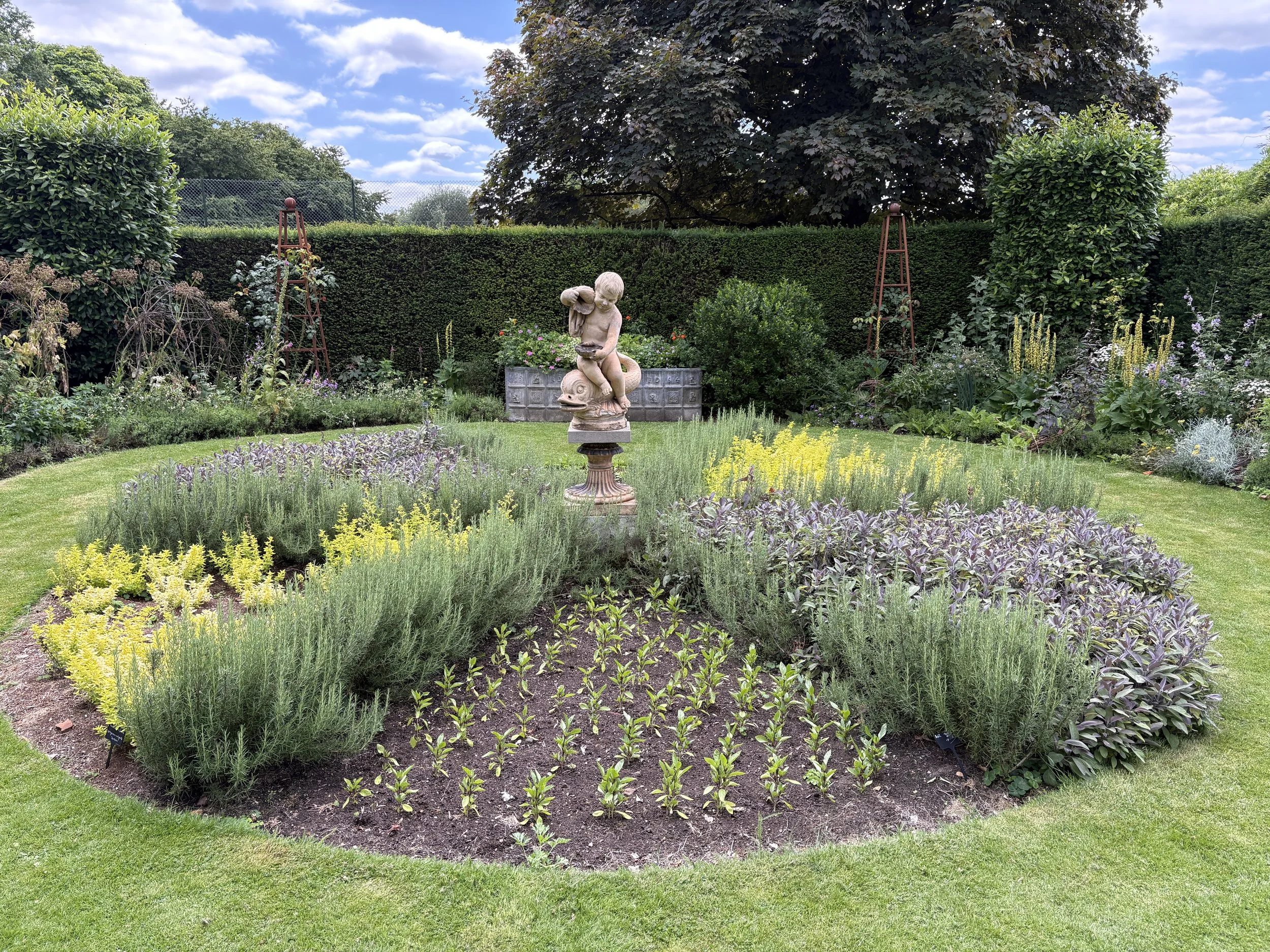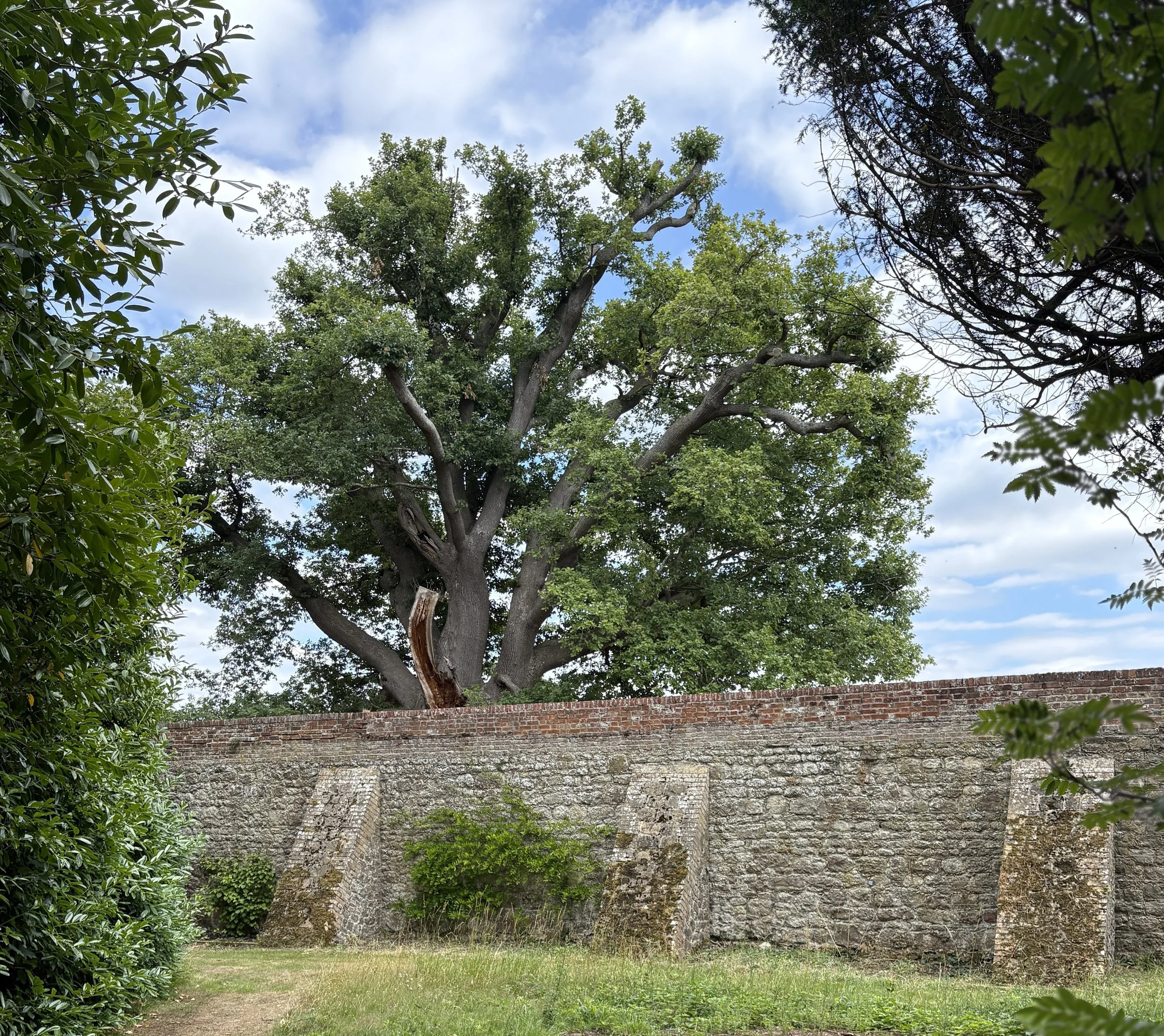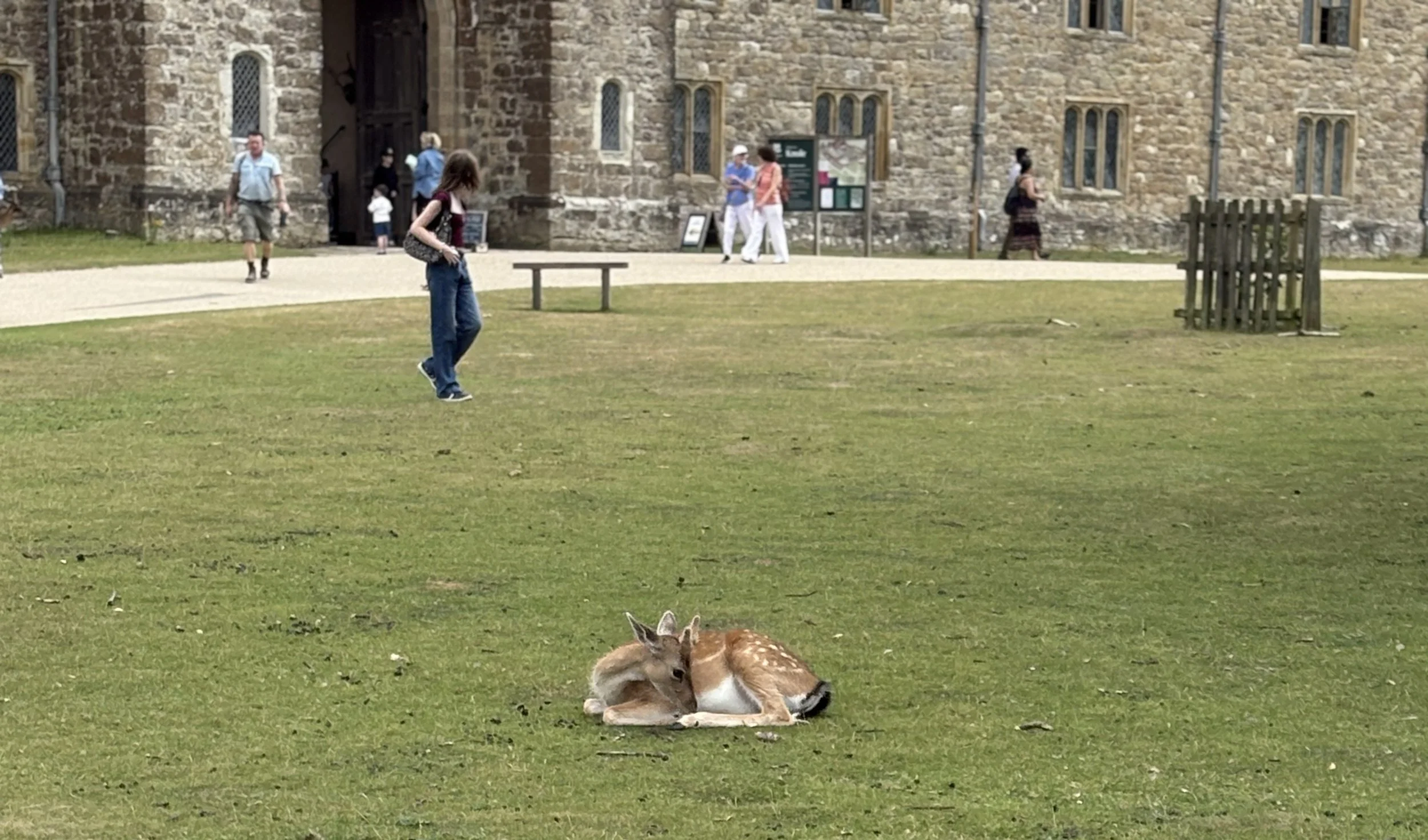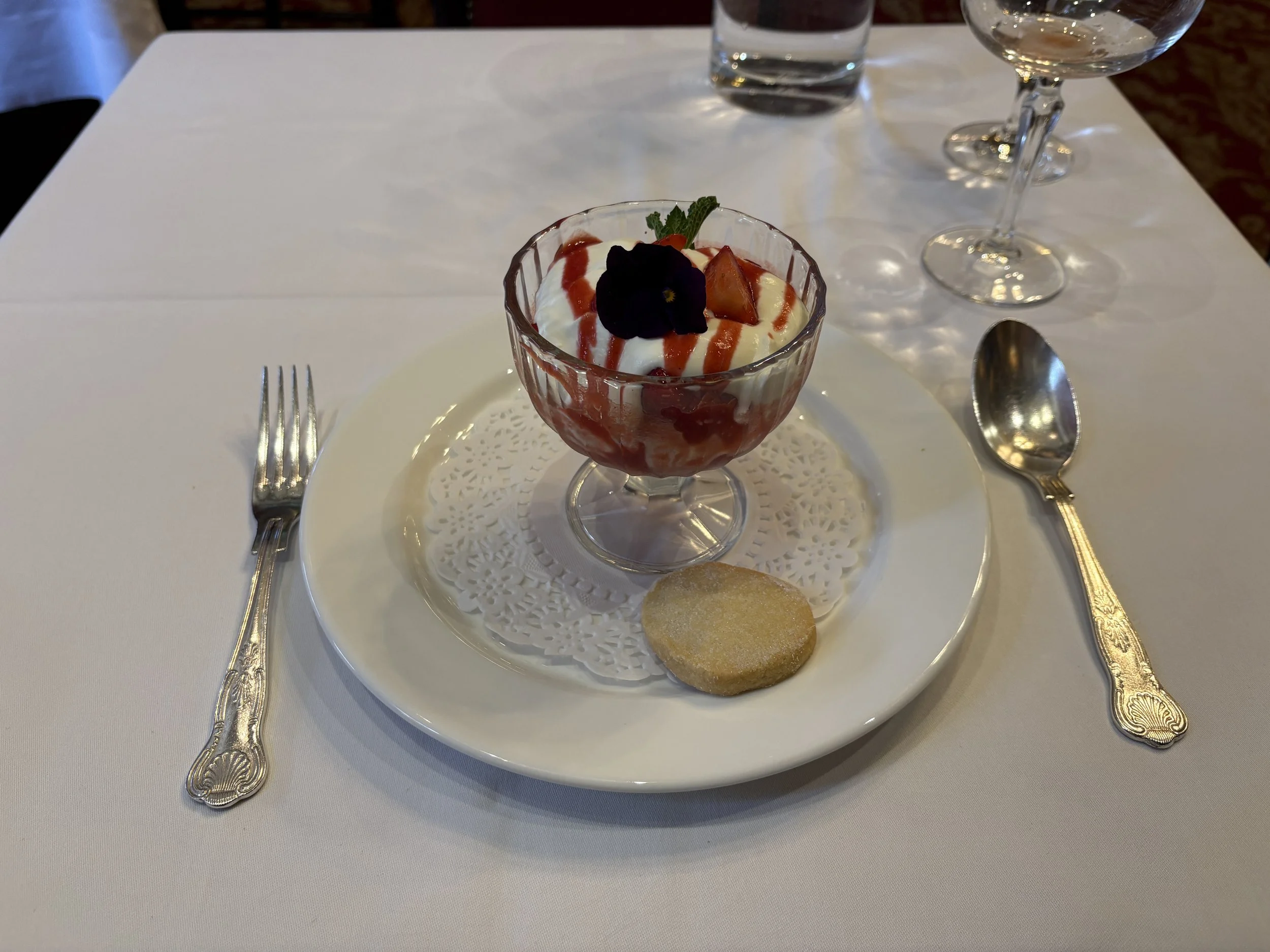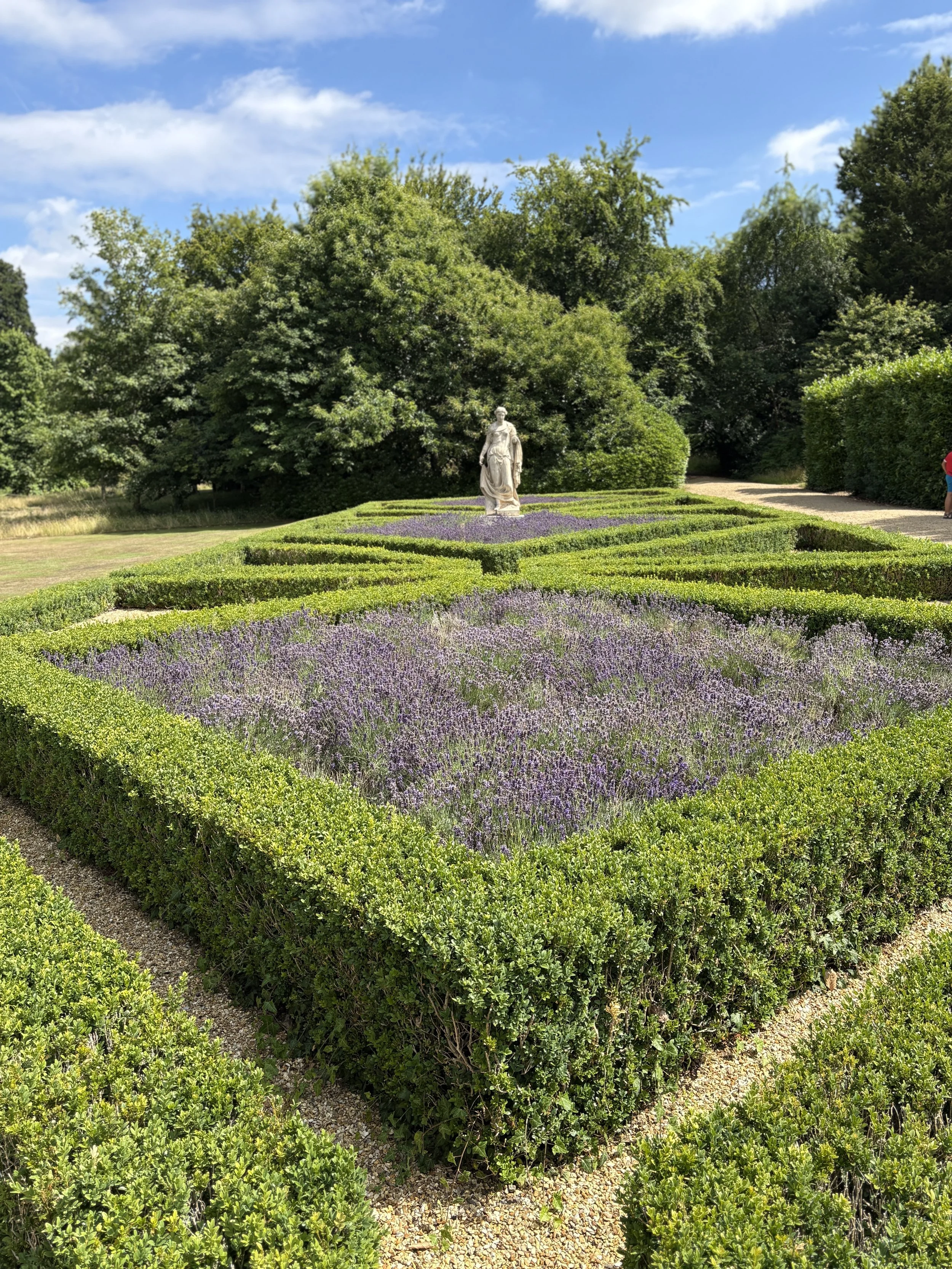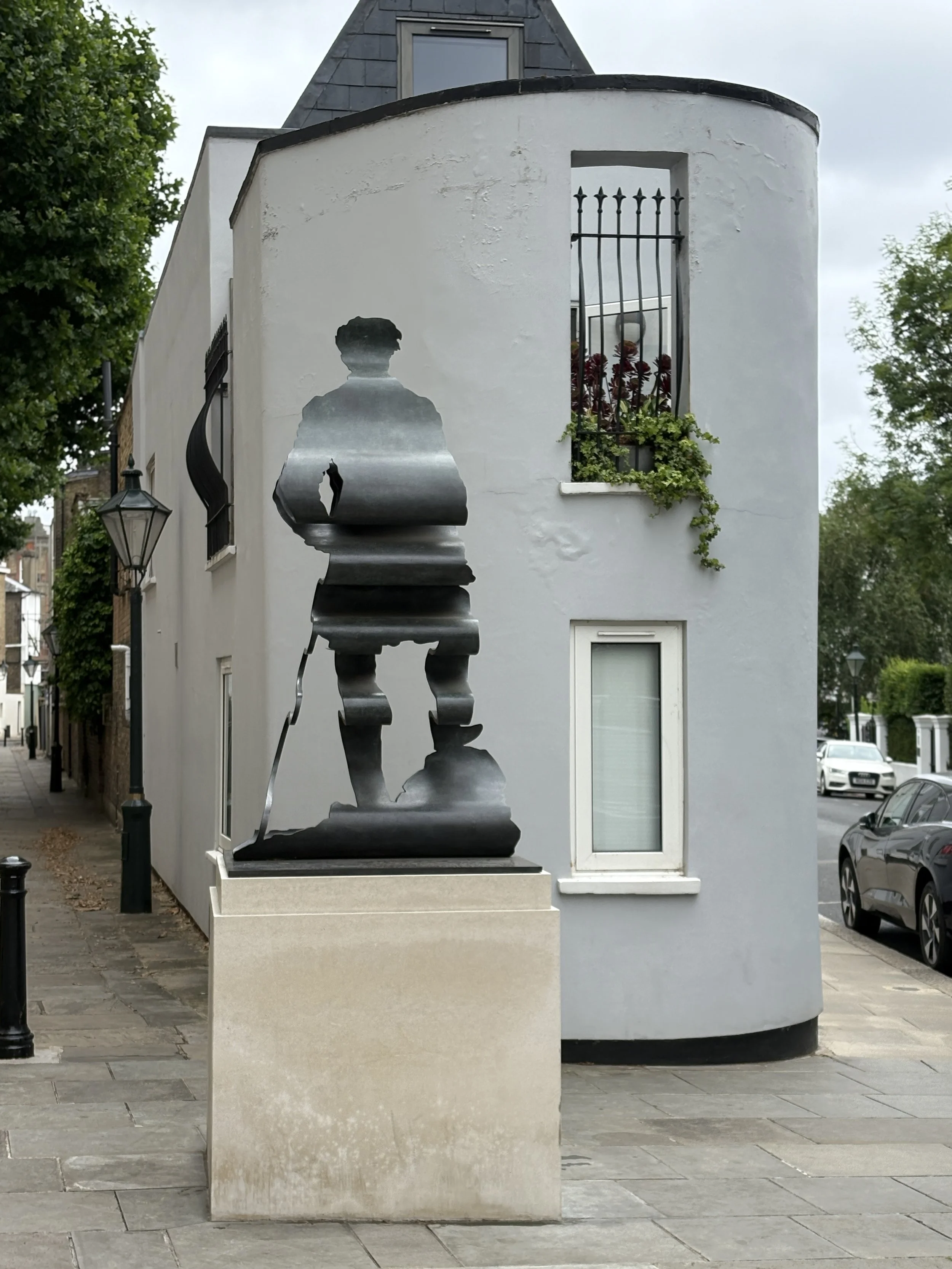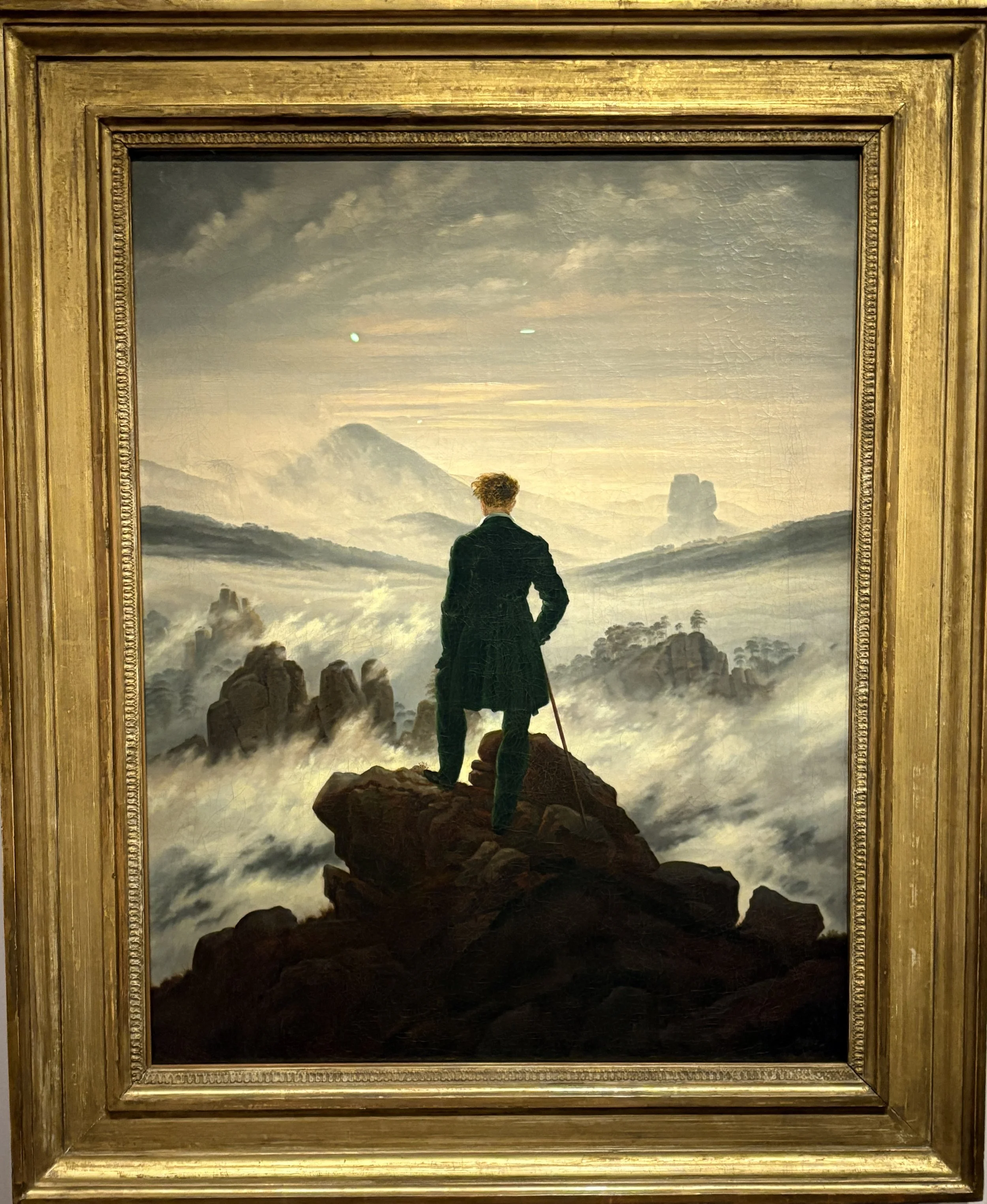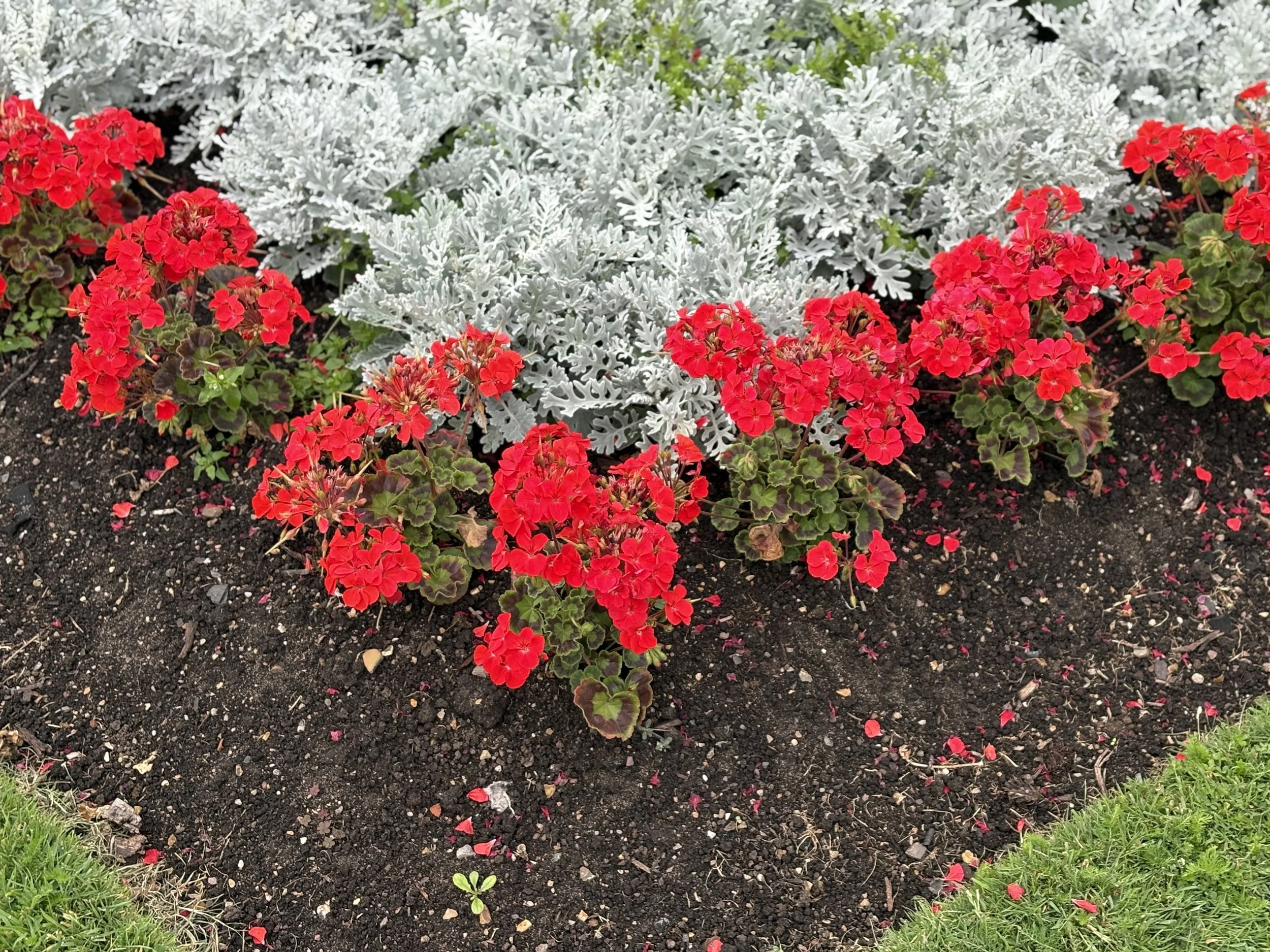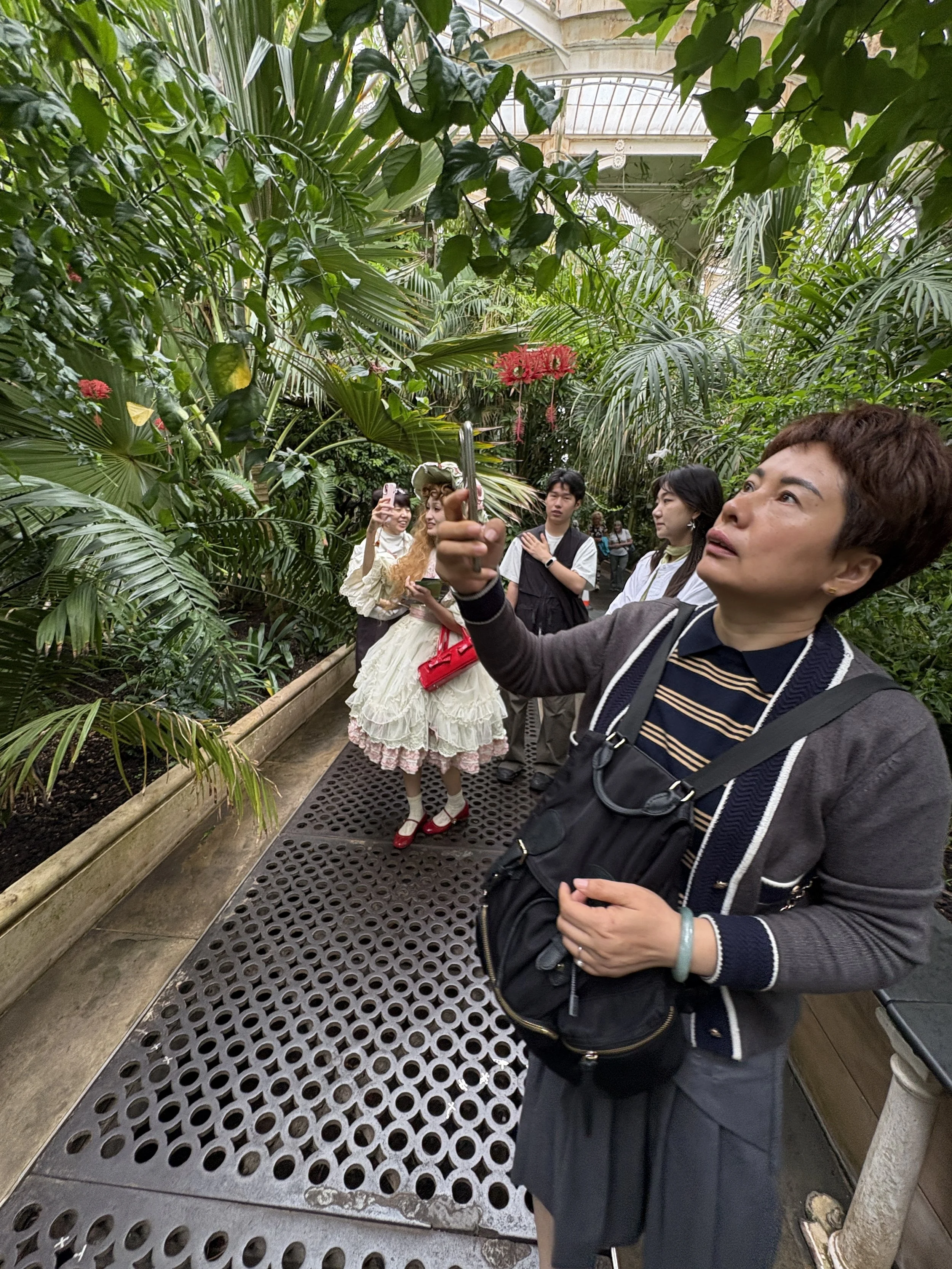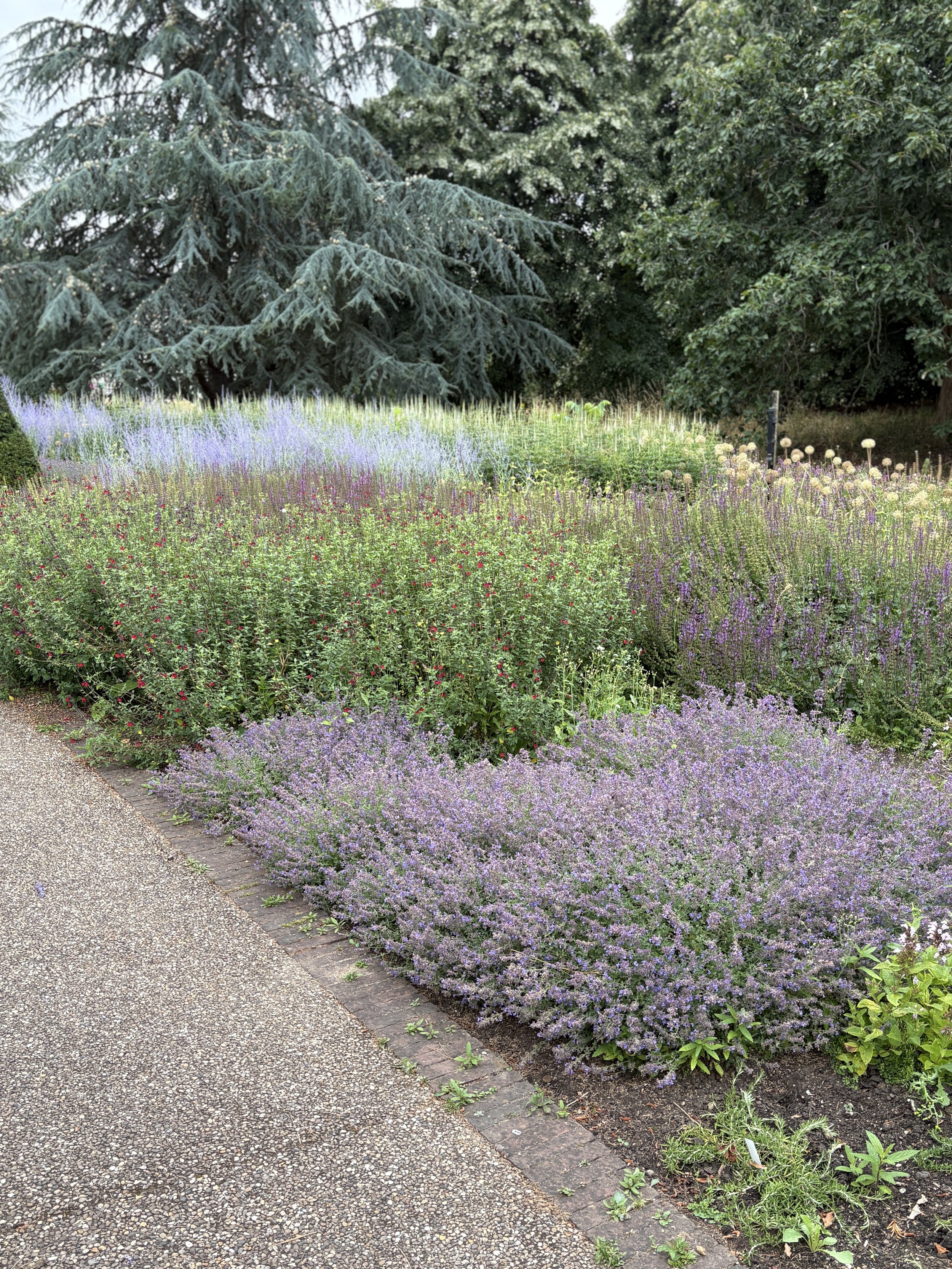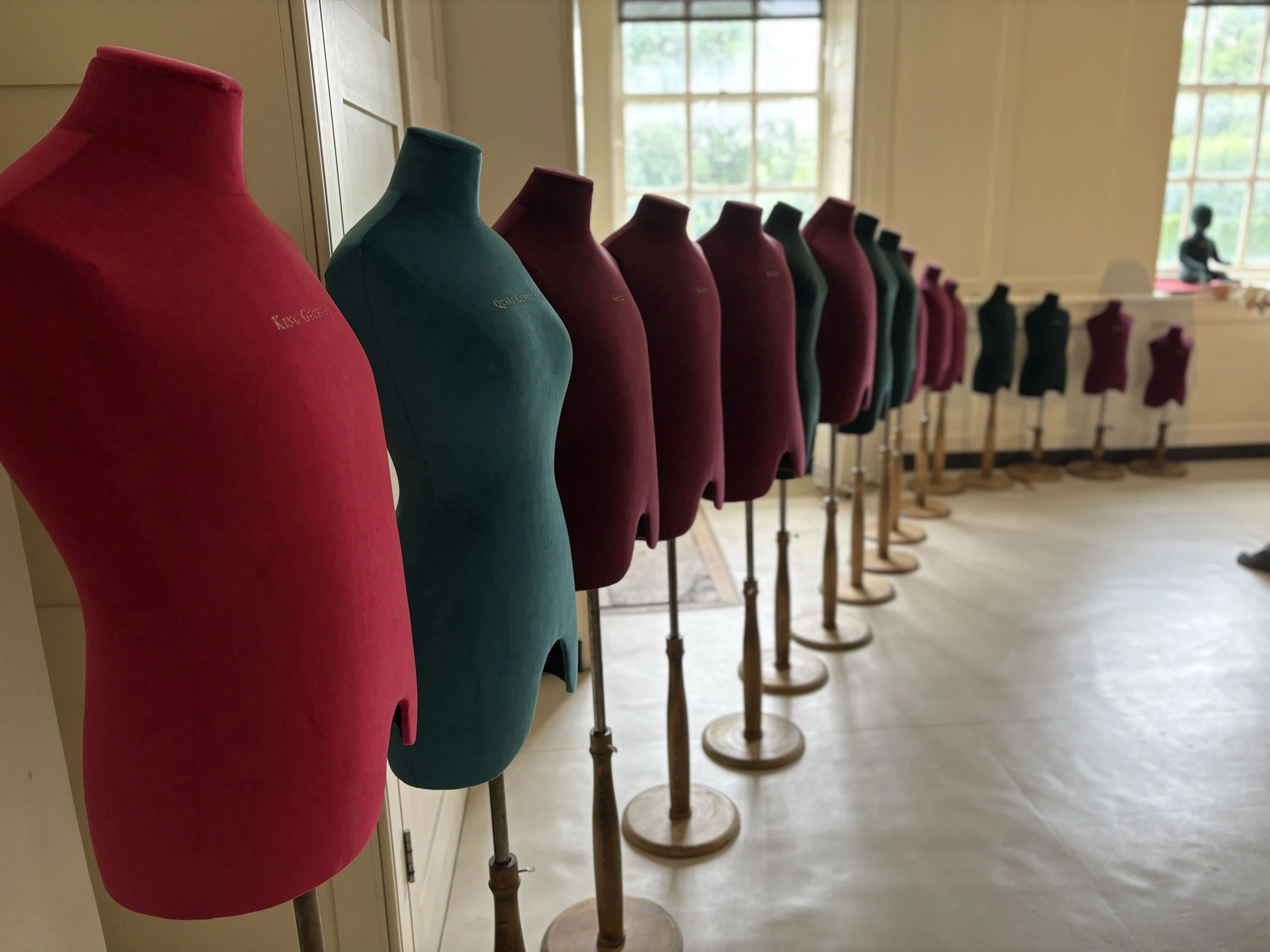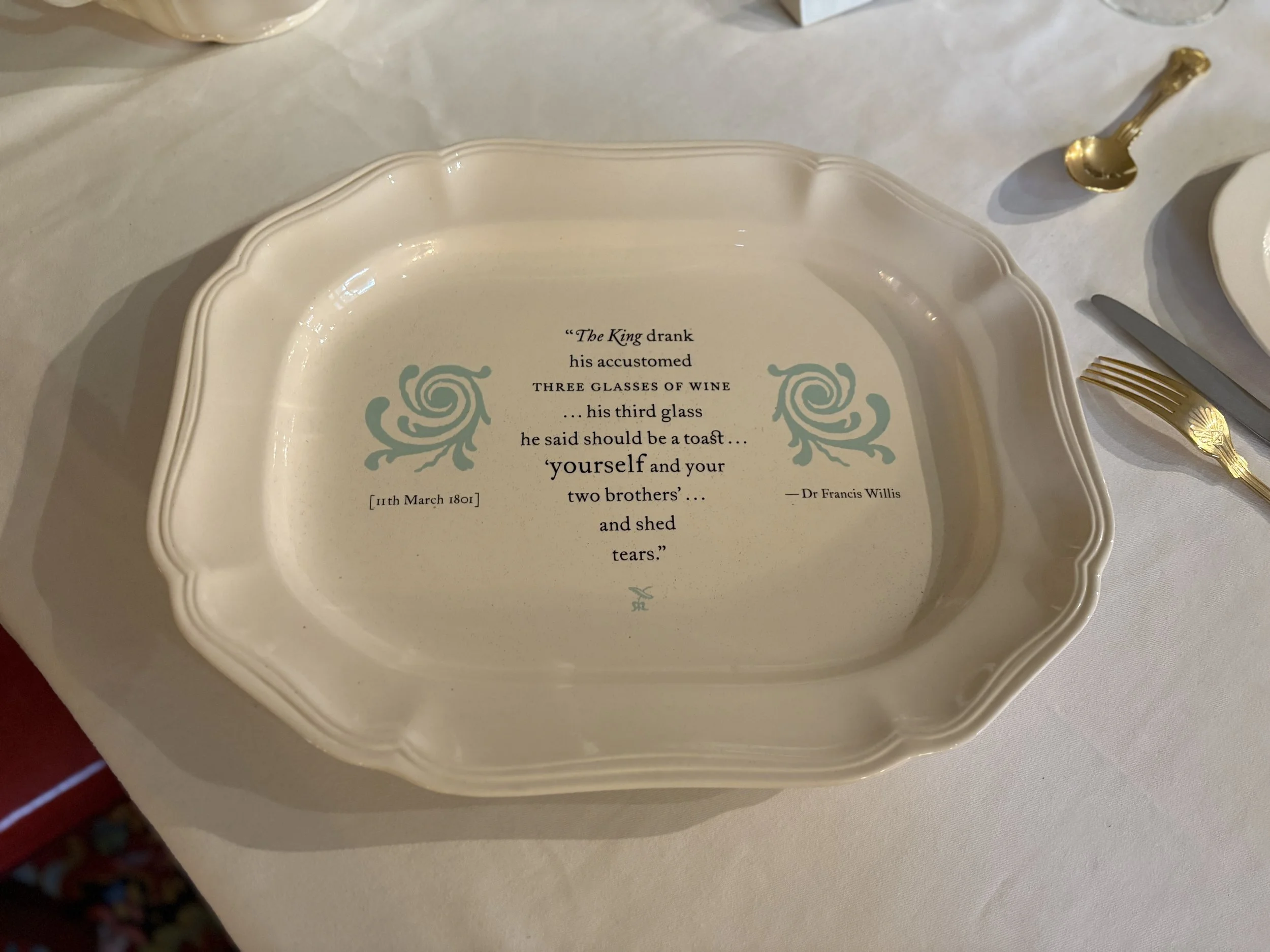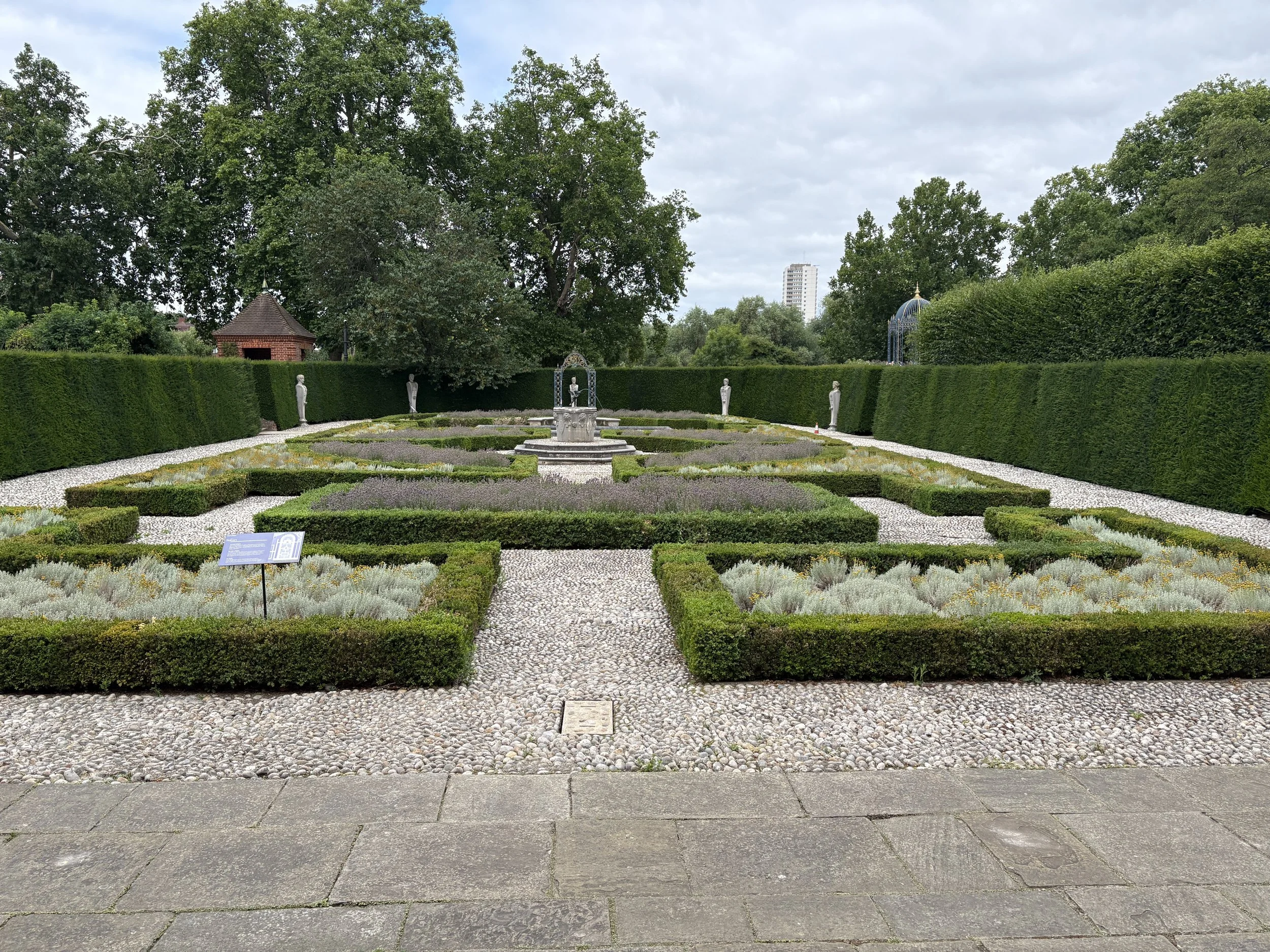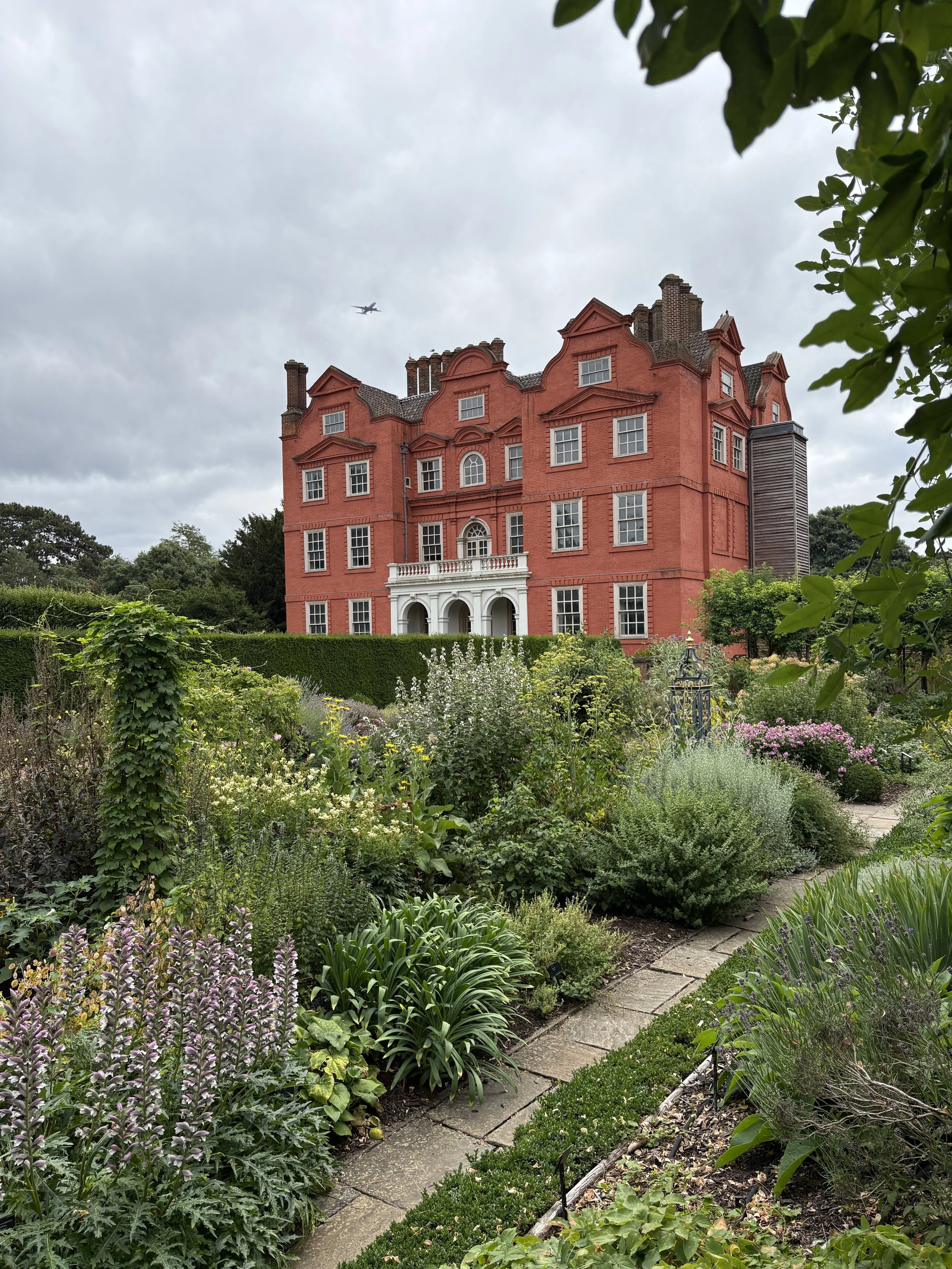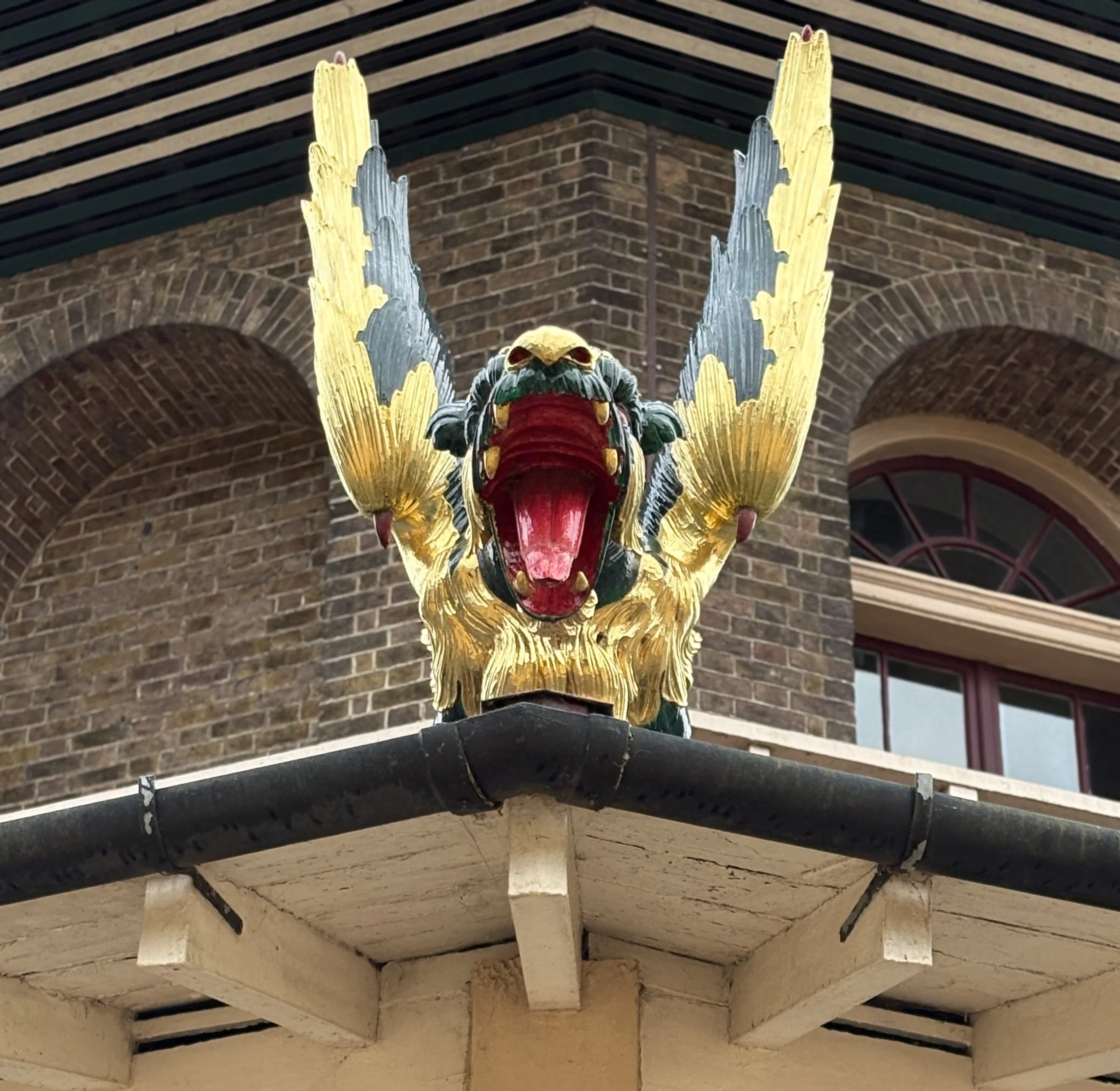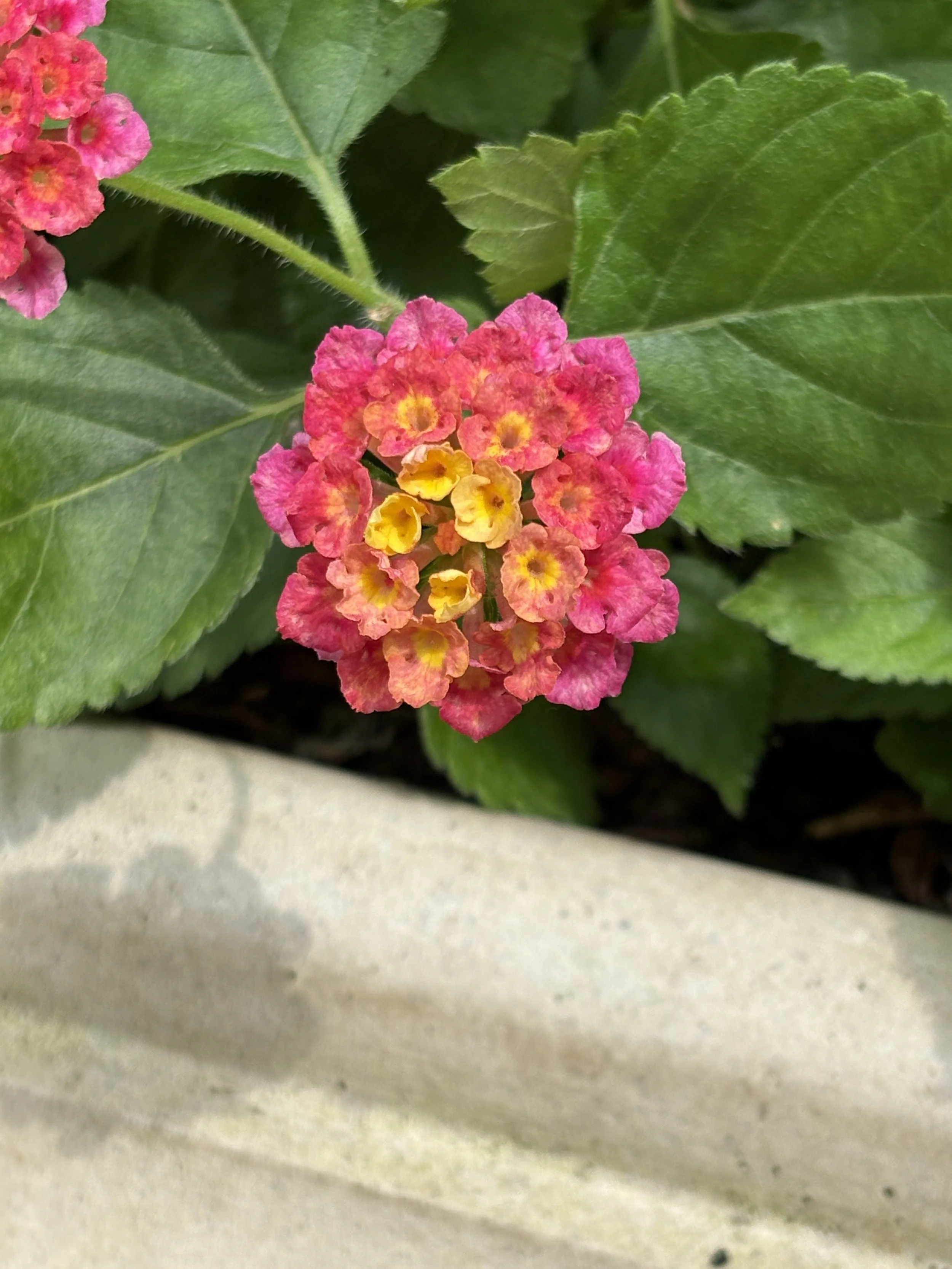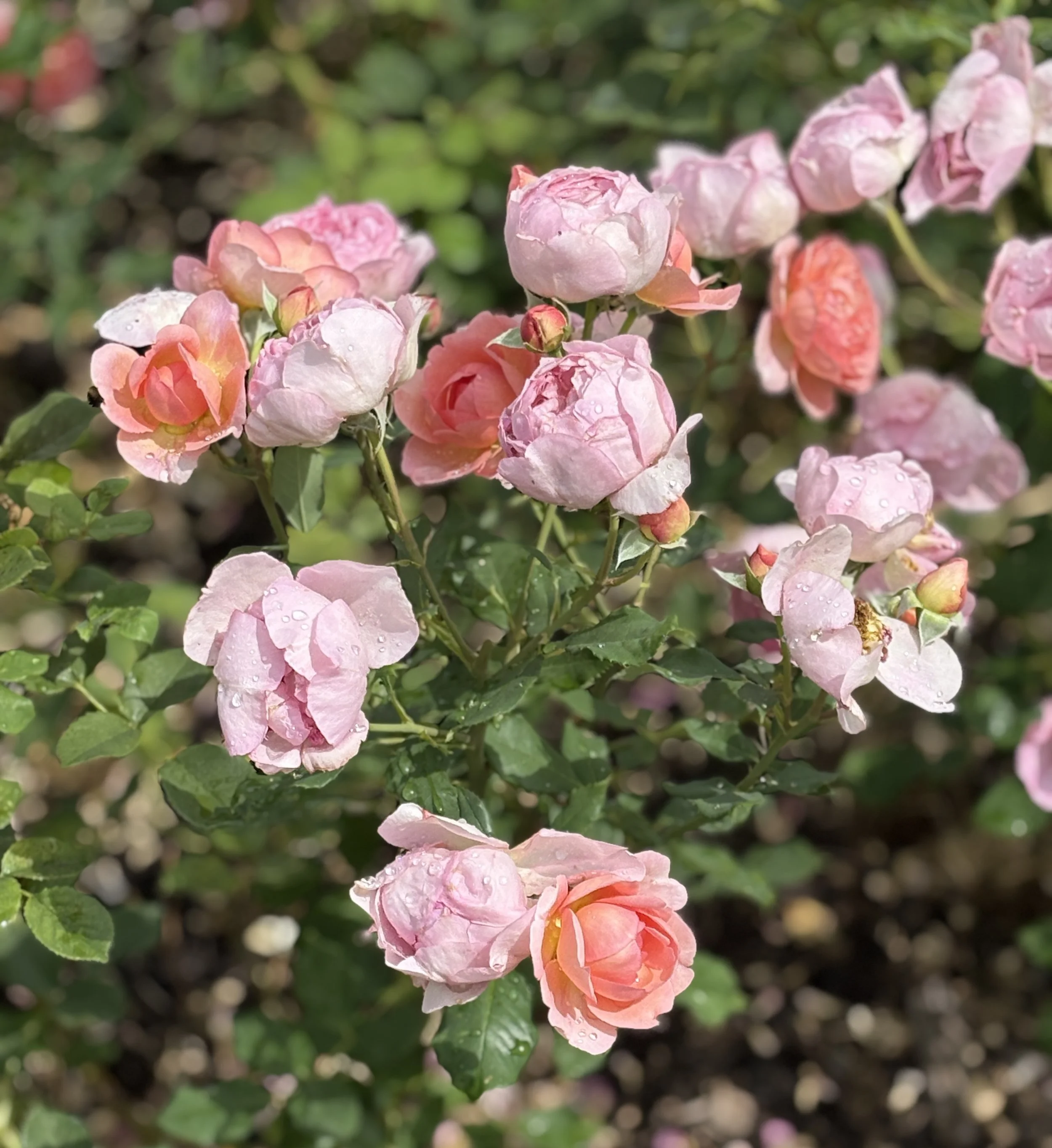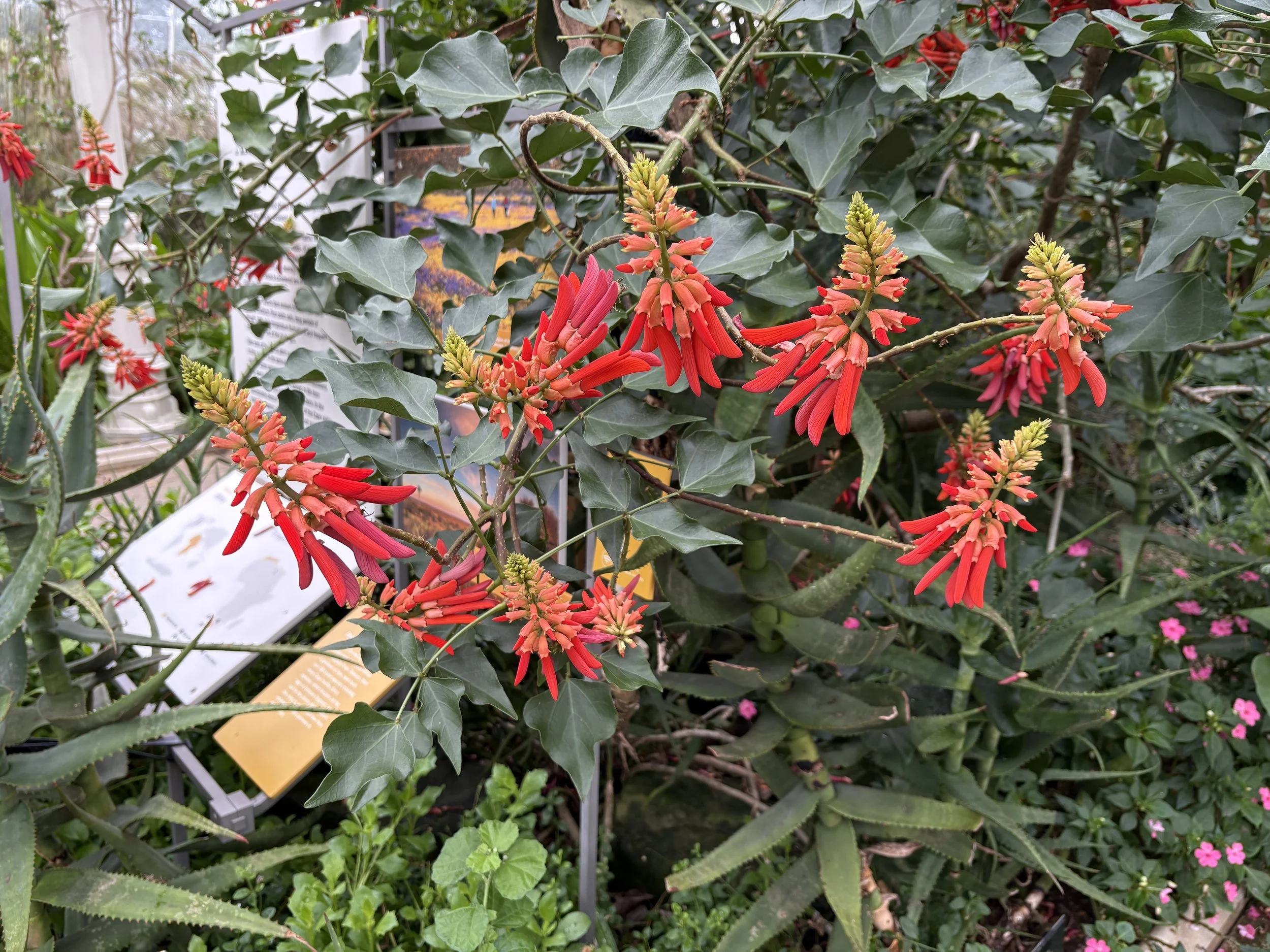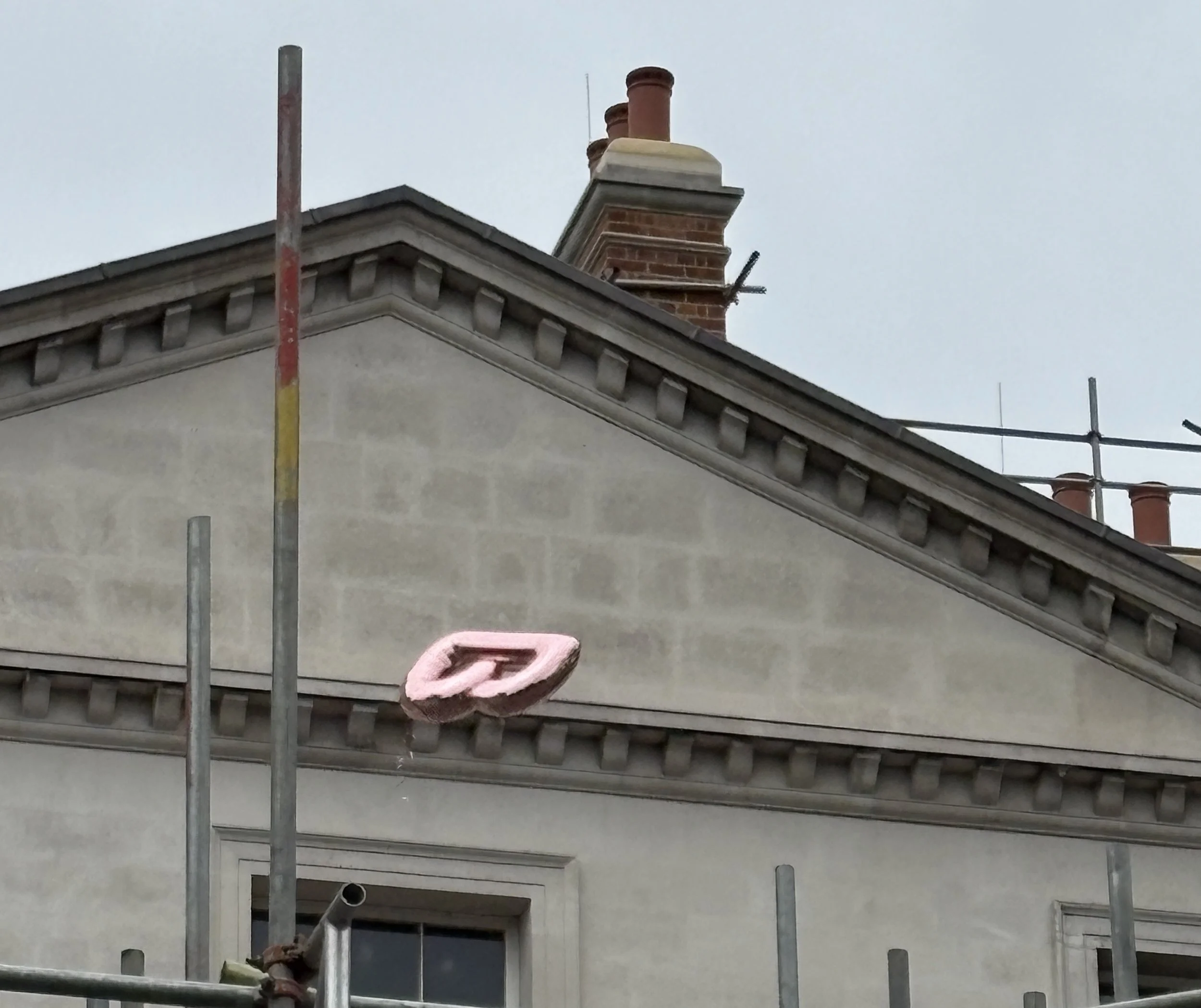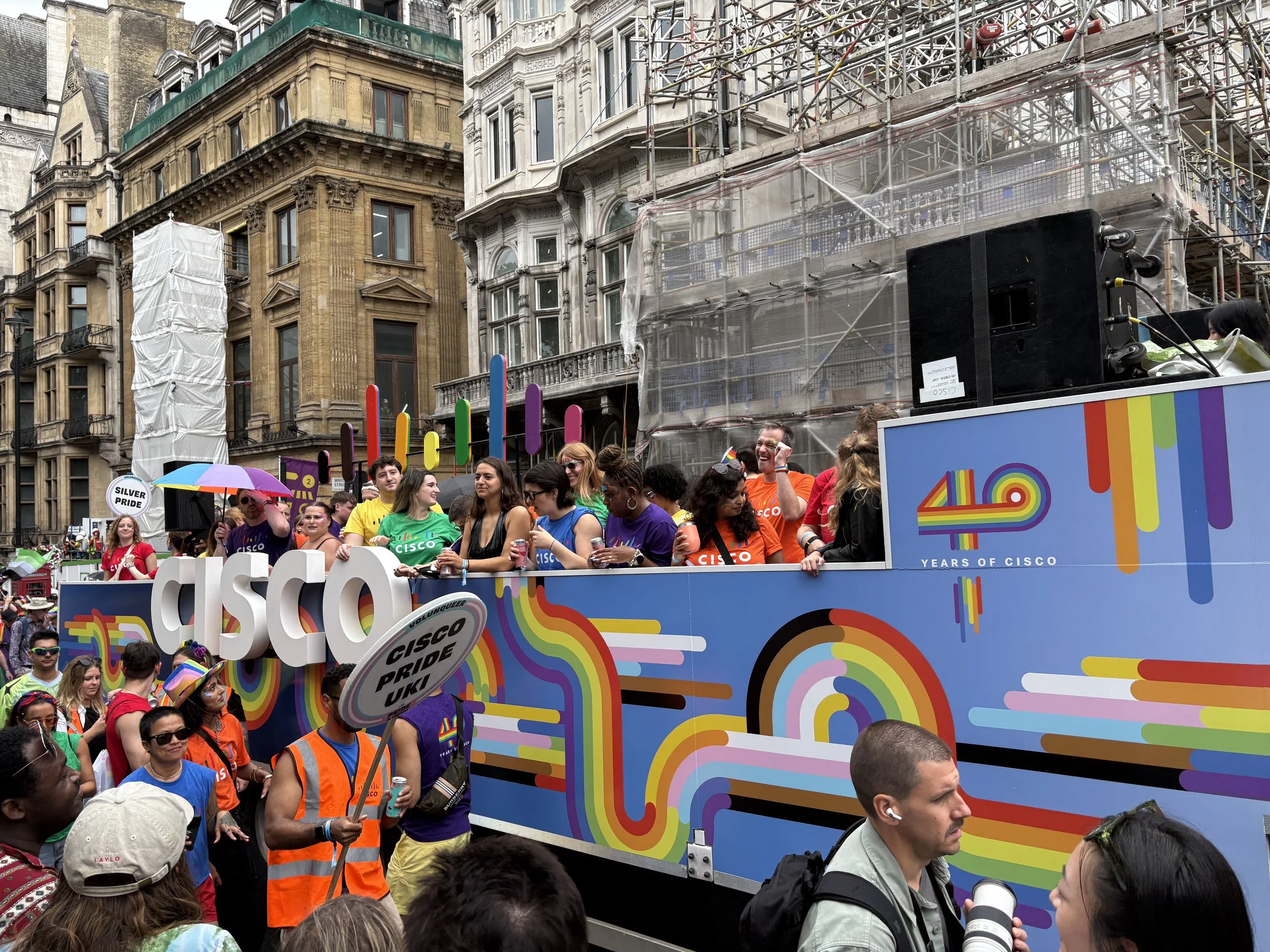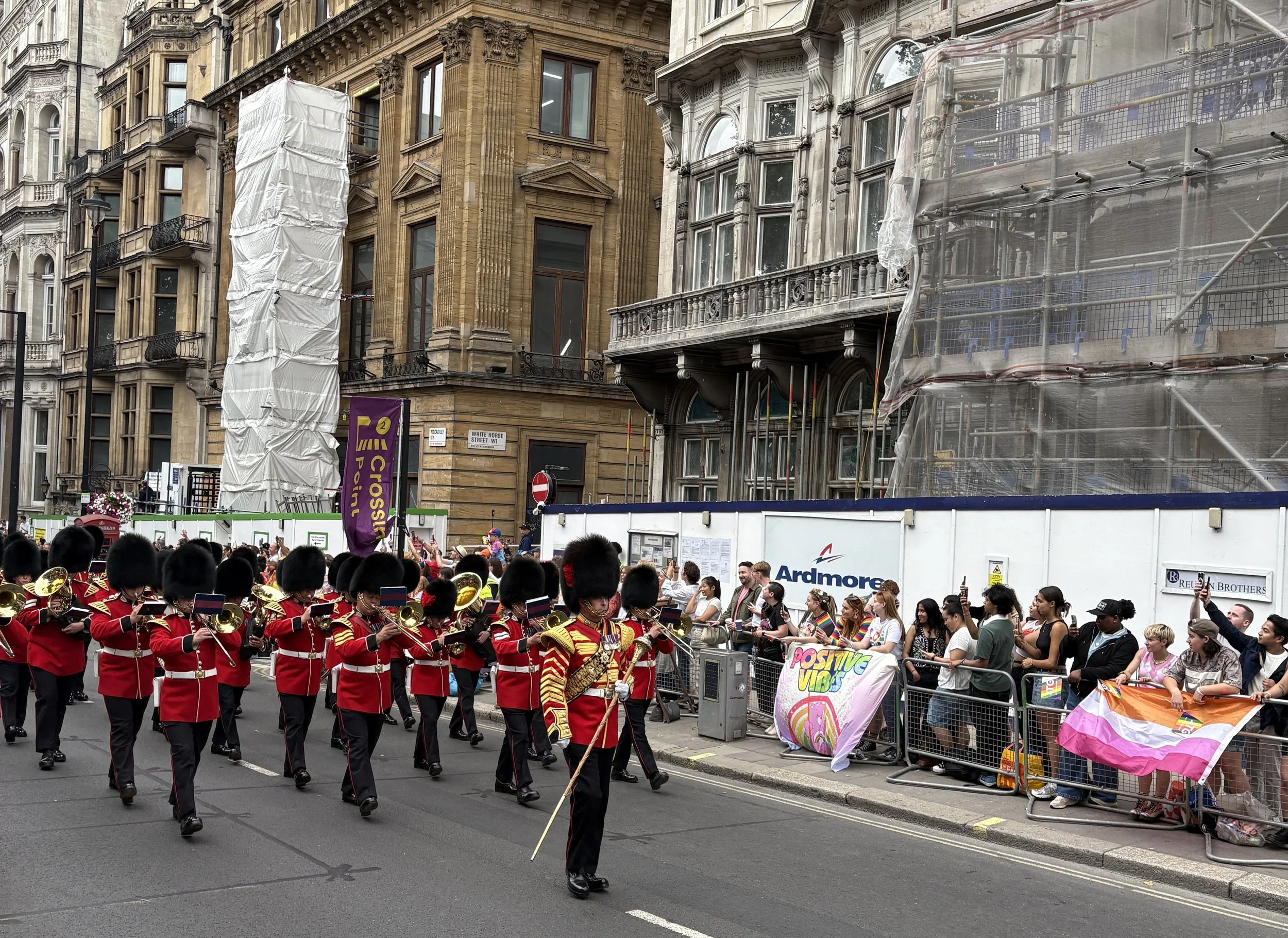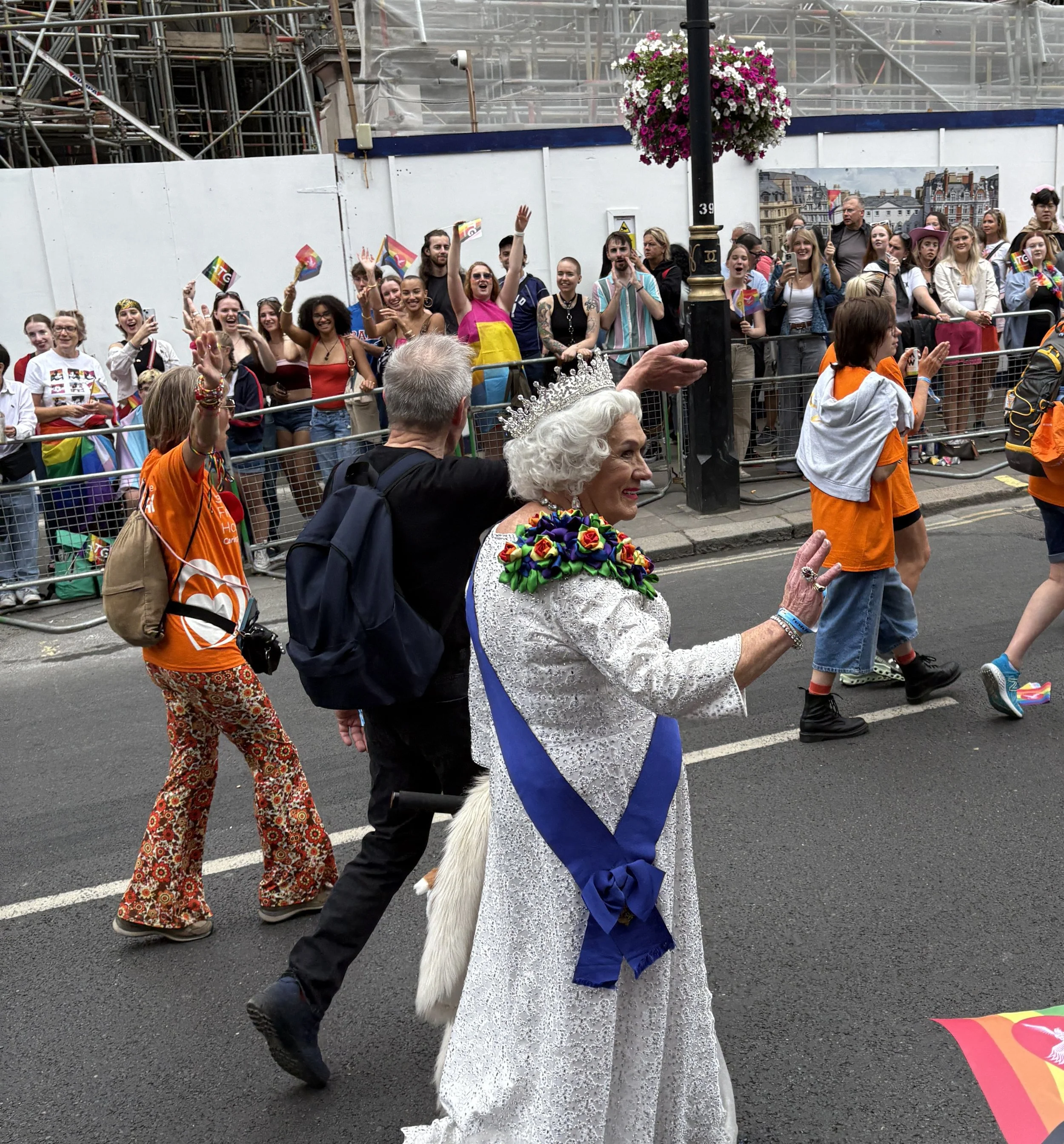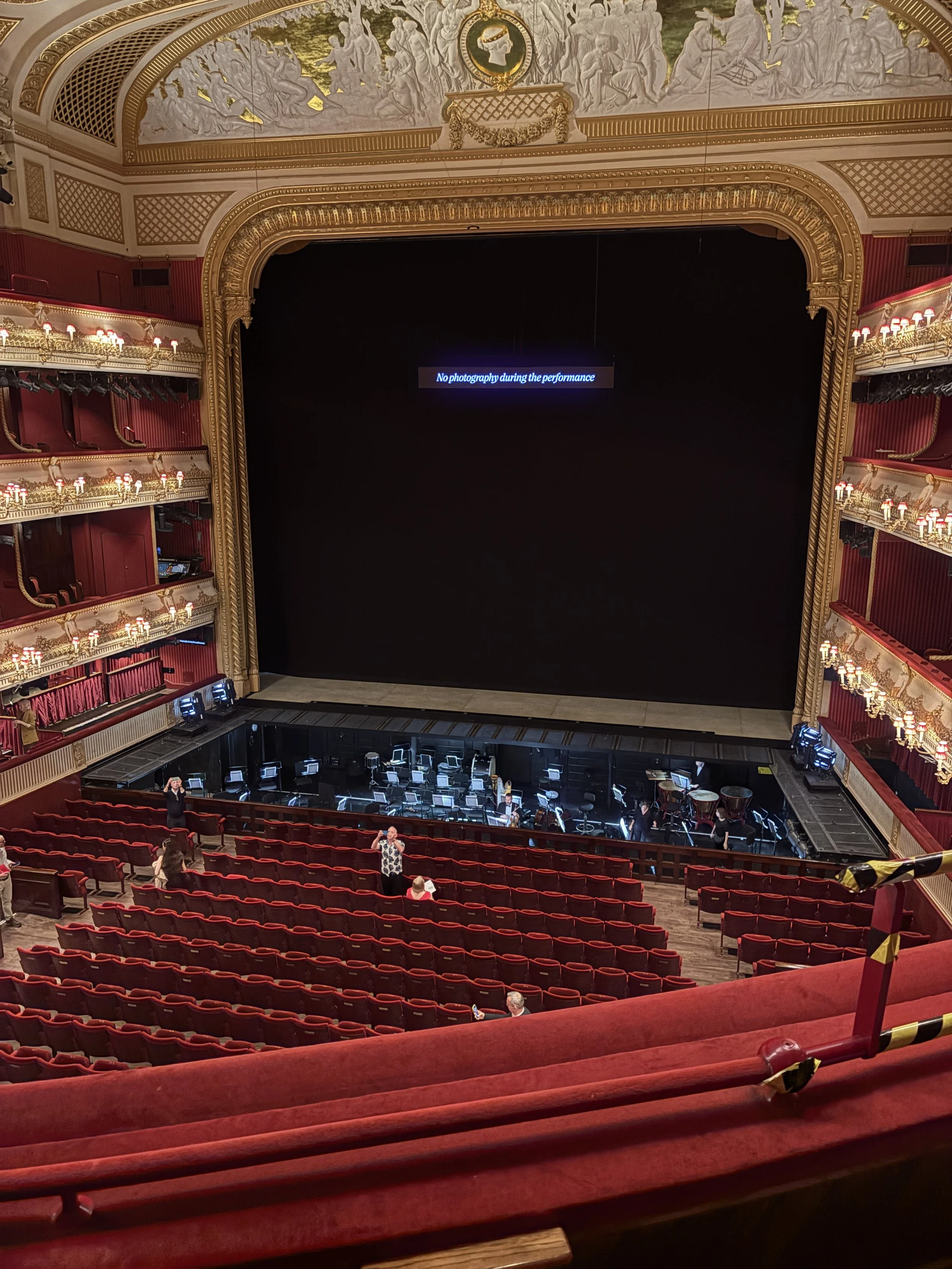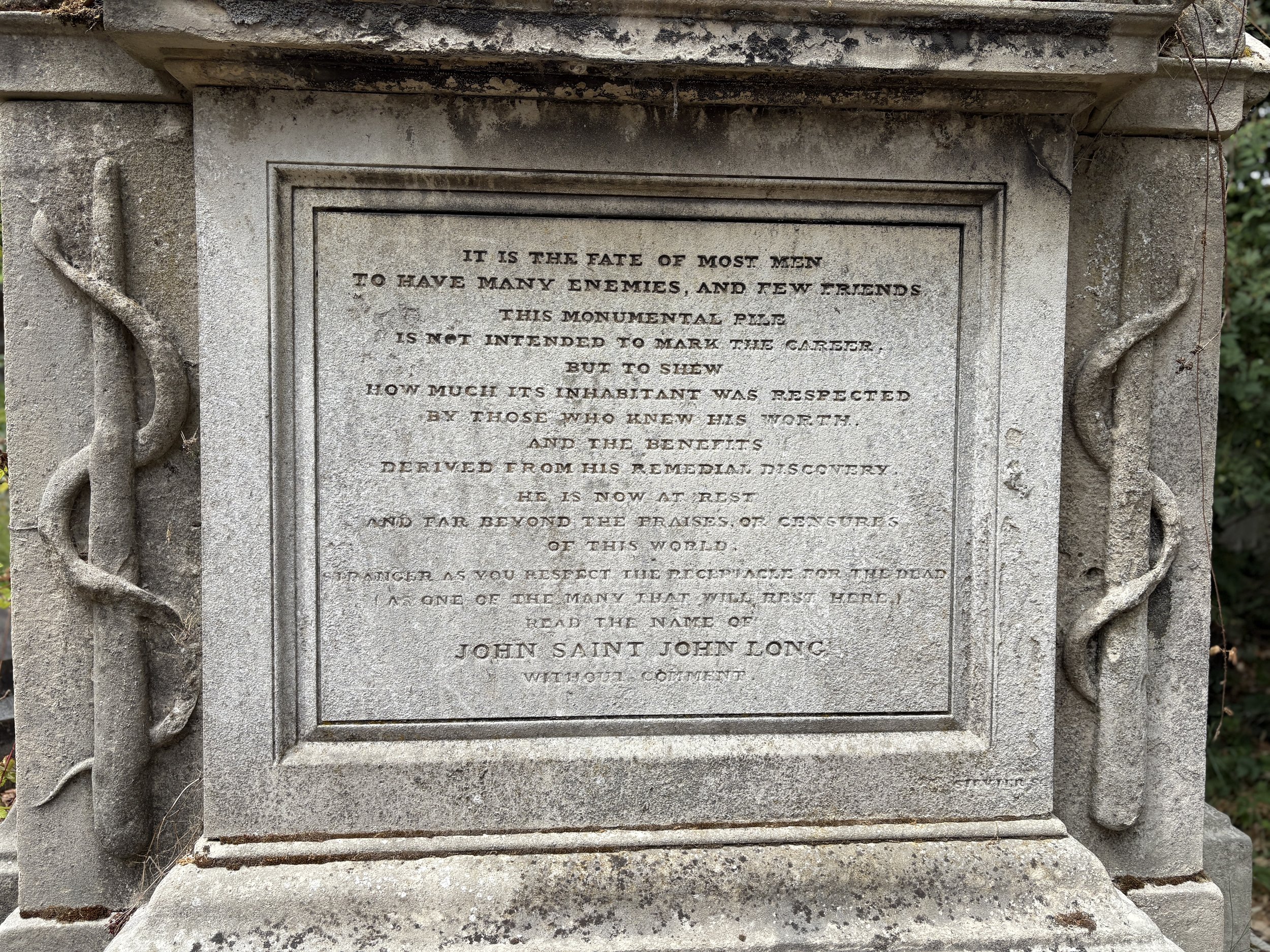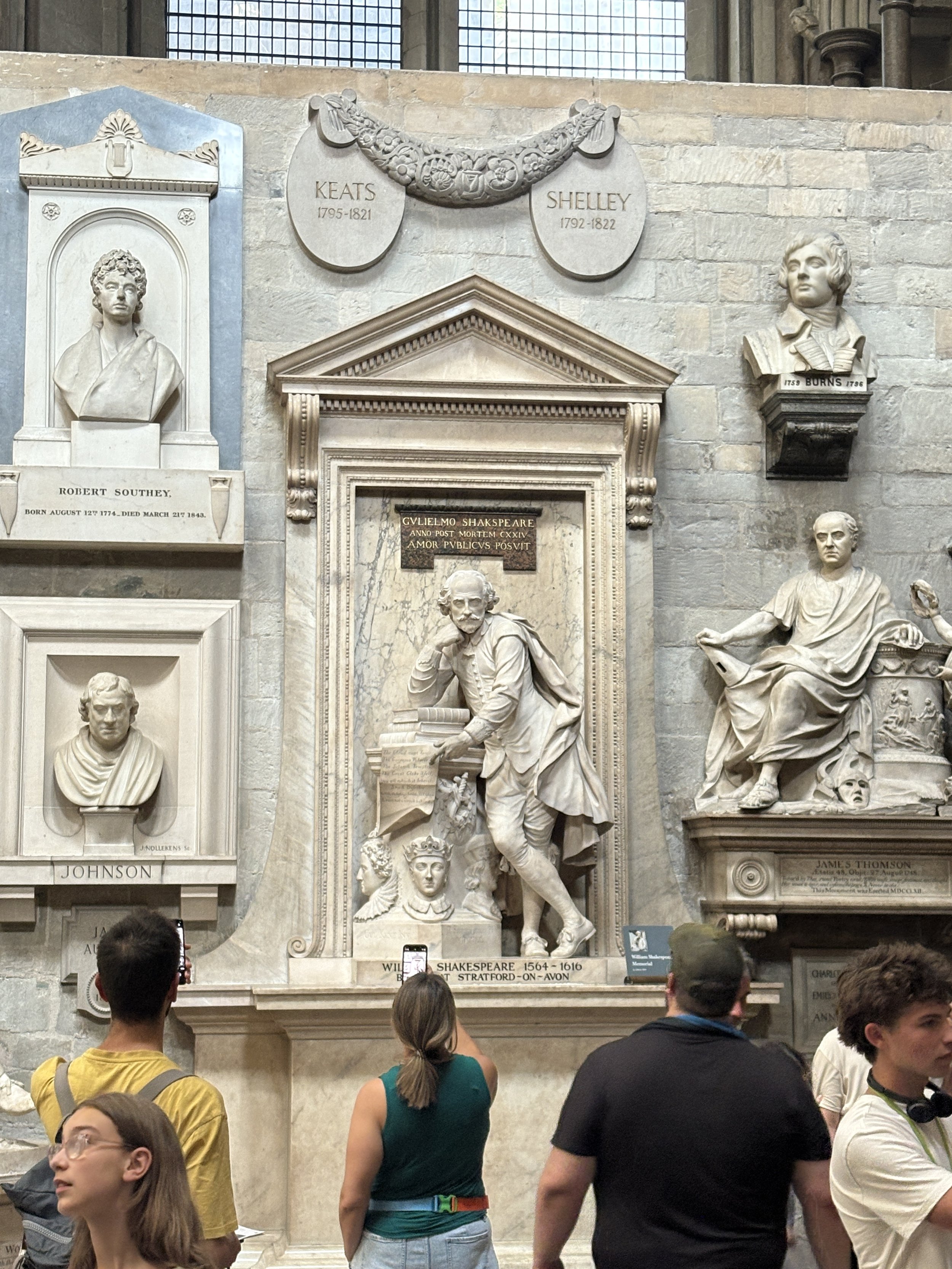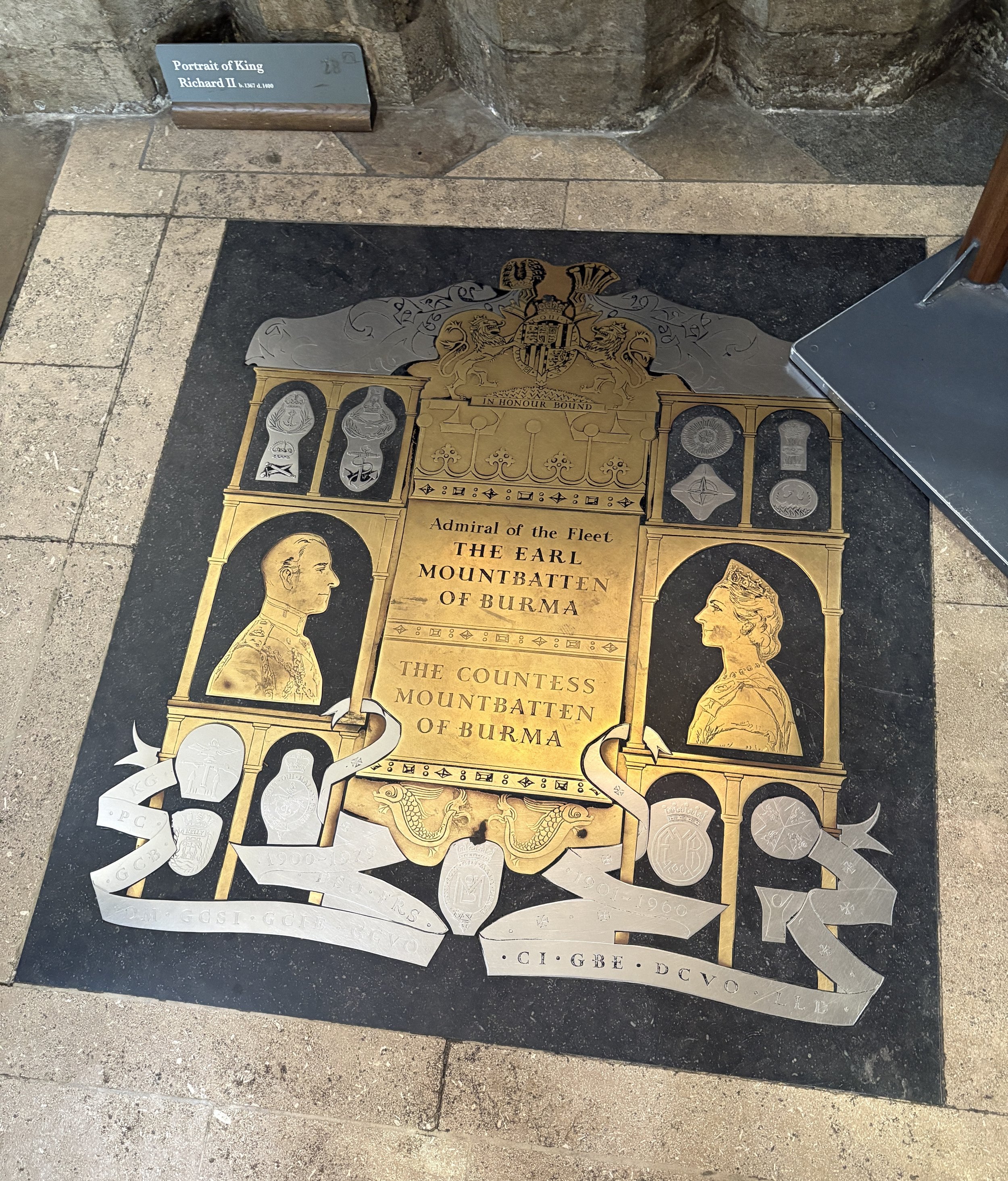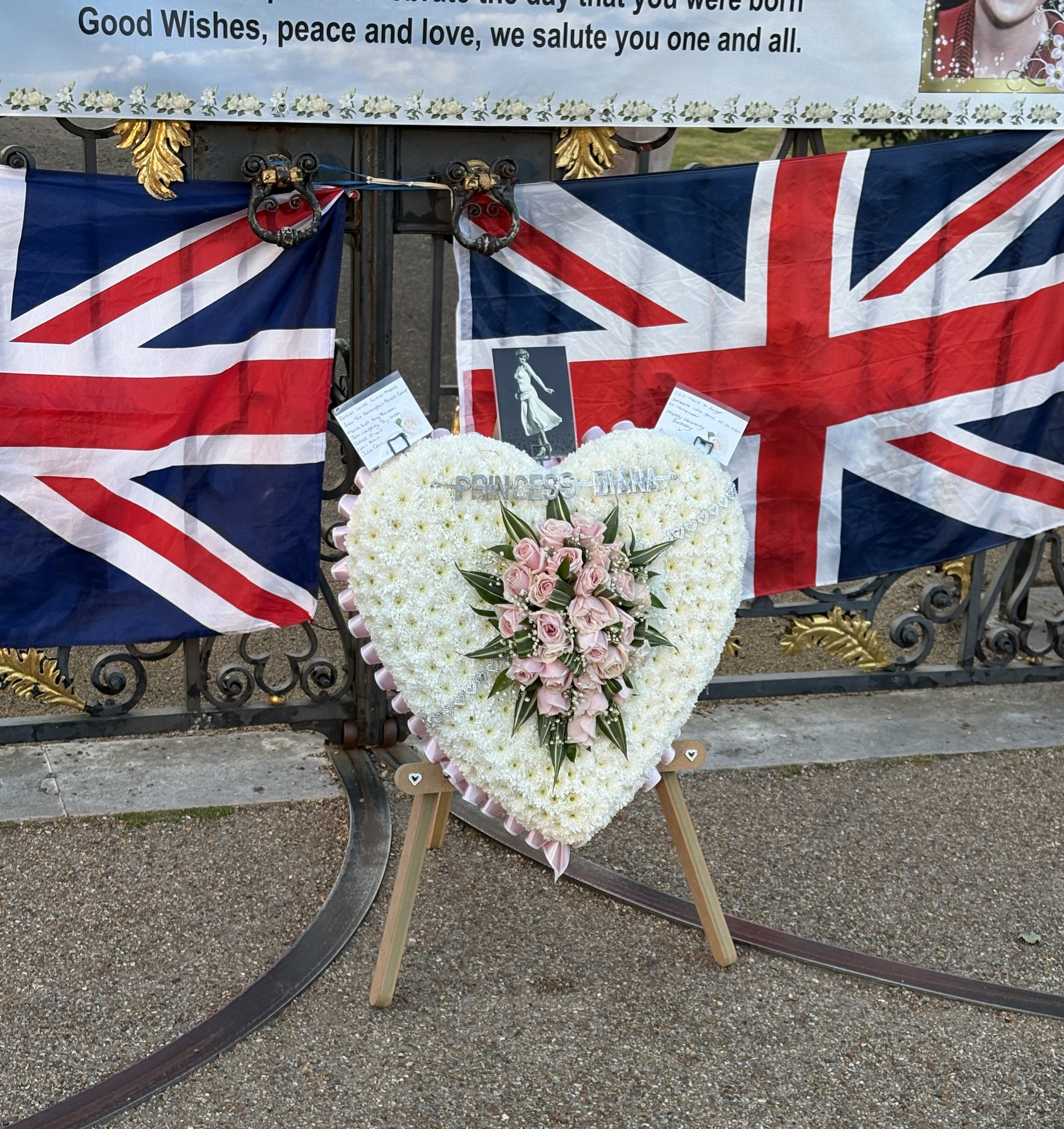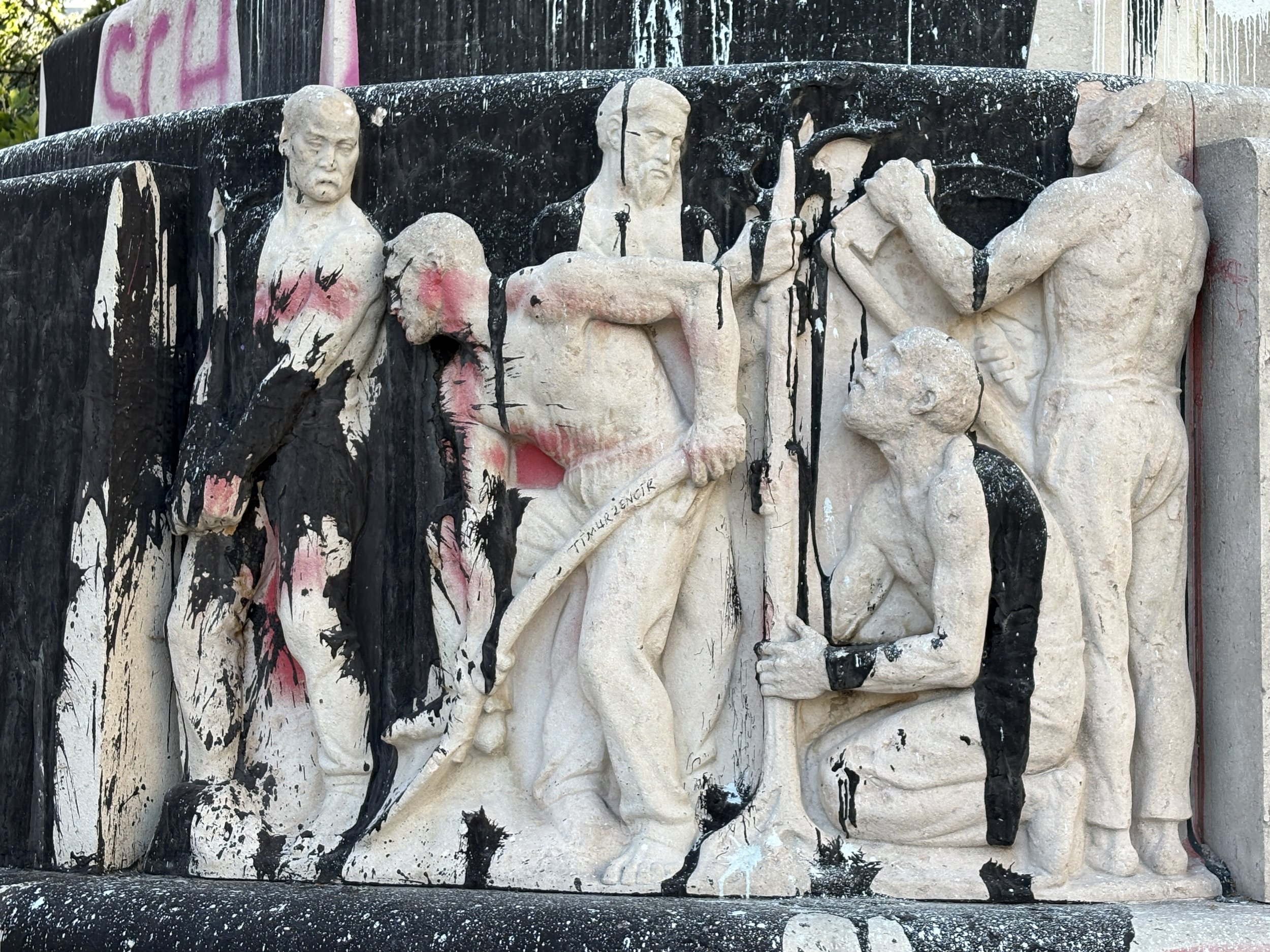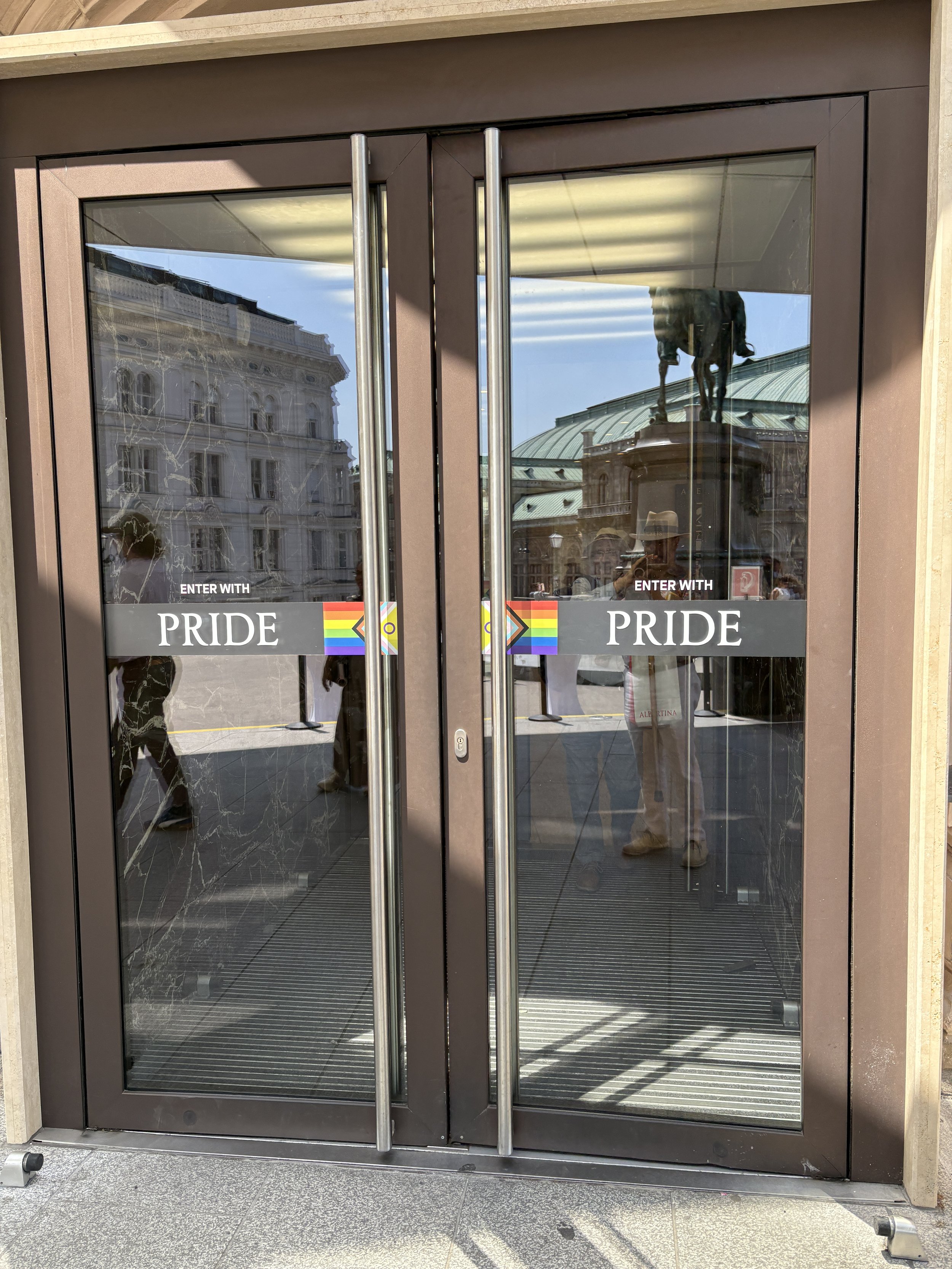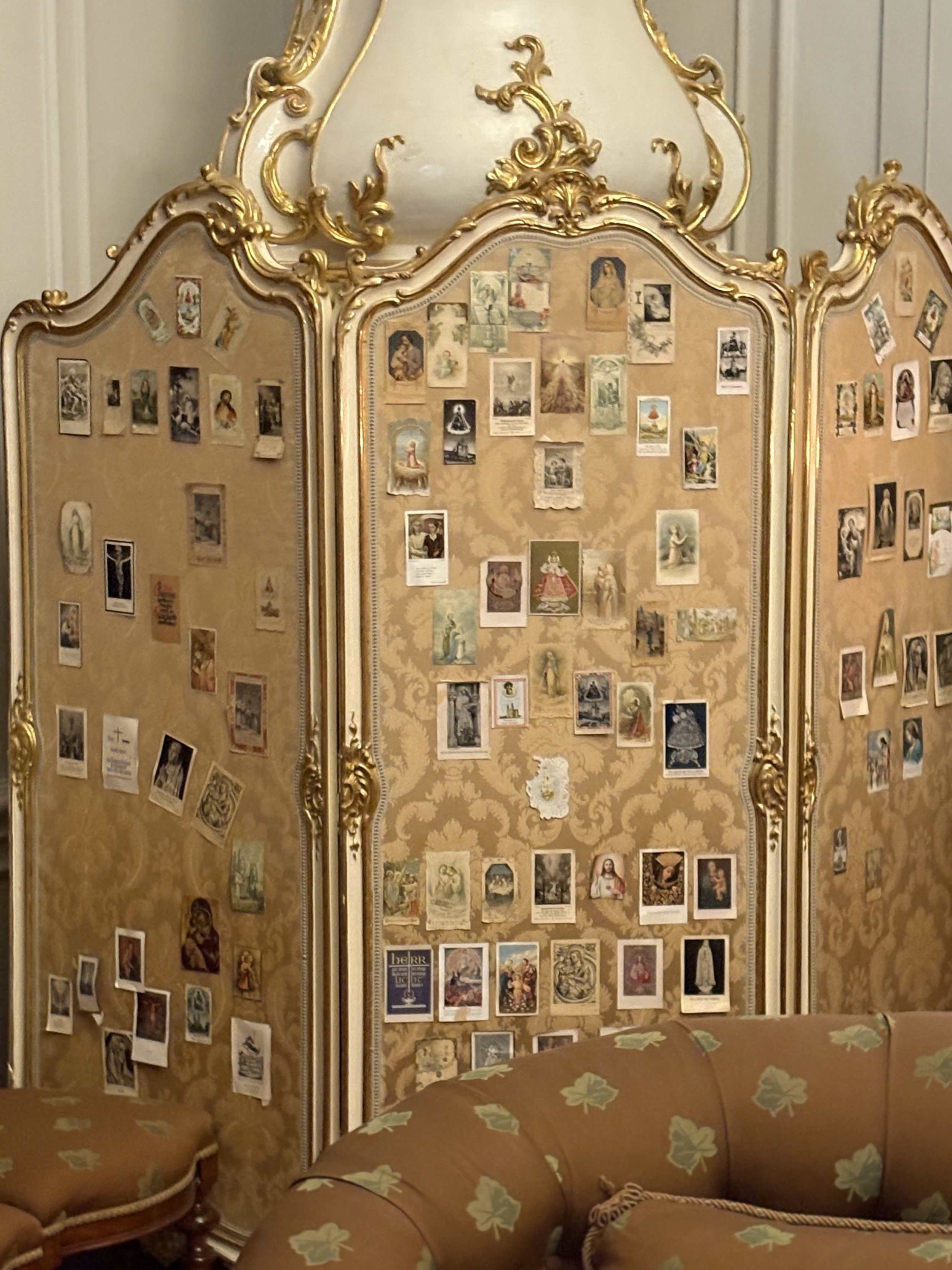1) No, I didn’t ask myself “Why not experience rush hour on public transportation as long as I’m here?” But that’s the way the cookie crumbled this morning. The most alarming part of it was at the beginning, waiting for my District Line train at Gloucester Road. A man on another platform was ranting about something, probably in violent language I just couldn’t understand (but it was English). He looked to be in his fifties, dark hair cut so short you could comb it with a washcloth, wearing a baggy pair of blue shorts with his shirt draped over one shoulder, exposing 95% of his cask-sized torso. I could not tell if he was having a mental health episode or was just hoppin’ mad about something.
2) As usual, I made my train quite early, at Charing Cross for Sevenoaks. It doesn’t matter whether they tell you to keep left or right when going up or down stairs, because people do both. Be prepared!
3) The train was nearly isolated at first, but other passengers came on at Waterloo East and subsequent stations. And I passed the journey reading, at last, the UK edition of William Hanson’s Just Good Manners. And my goodness, it is turning out to be a treat.
4) To my relief, there was no difficulty getting a taxi at Sevenoaks for today’s destination: Knole, one of the stateliest of the Stately Homes of England, for generations the home of the Sackville/Sackville-West family (more on that later). I had never been, but certainly had heard about the house, and about both Vita and Eddy Sackville-West.
4a) The approach is entirely urban, until it isn’t. From a busy and narrow urban street, your taxi turns into a drive next to a school, and almost immediately you’re in woodland. And you drive, twisting and turning, through woods and fields until you get to the gate, drive through more woods and fields, and then you get to the parking lot and the entrance to the house. It’s quite something!
5) Curiously, Knole is celebrating Peter Rabbit and Beatrix Potter, though I could not figure out a connection between Knole and Potter. Walking up to the entrance, though, I felt like the ground had been decorated with “smart pills” in honor of the occasion. Do you know that joke? I think Mother told it to us when we were little. Of two little children, one was lamenting that he wasn’t very smart. “Well,” said the other, “you need to buy one of my smart pills for a nickel! Then you’ll be smart!” So the nickel and the pill were exchanged, and the first child started eating the pill. “Hey!” he cried. “This tastes like rabbit doodoo!” “Now you’re gettin’ smart!” came the reply.
5a) Don’t blame me, Mother told me that joke, I’m sure of it. I can just see her smiling and laughing now.
6) First stop: the Great Hall, hung with some beautiful portraits of former Earls and Dukes, and contemporary copies of famous paintings of George III, George IV, and Queen Charlotte given by the monarchs to the Sackvilles. (The G4 was a copy of his portrait by Lawrence, who I had just finished reading about in The First Celebrities.) And this presented my first problem with Knole: all the paintings are lit in such a way that they cannot be photographed well by tourists. There’s always a shiny white reflection someplace.
6a) The vivid and beautiful stained glass somewhat makes up for this.
La Baccelli. Remember dahlings, she’s made of plaster.
6b) Going through a small door into the Great Staircase, I happily recognized La Baccelli, the full length reclining nude statue of the mistress (!) of one of the Sackvilles, a Venetian ballerina. My English friends introduced me to this work on the program Hidden Treasures of the National Trust, which undertook to restore it. Unsurprisingly, the family had it hauled to the attic after the death of her lover, the Third Duke of Dorset. But now she’s where she ought to be seen, and she looks marvelous for her age.
6c) Just about everywhere there were guides eager to answer questions and share the Joy of Knole. At the top of the stairs I had a pleasant chat with the gentleman guide, particularly over a painting hanging in a passage of a moneylender going over his books with the Devil. Apparently it’s called The Miser.
6d) Next, a long gallery full of portraits in identical frames of Tudor monarchs and their advisors. It’s a beautiful room, and off it in two directions were bedrooms and other rooms, all with their interest. One was called the Spangle Bedroom, because the bed coverings were all embroidered with sequins!
6e) But the next room made me gasp, the ballroom, hung with portraits of later Dukes of Dorset and Earls of Sackville, moving from the late 17th to the early 19th century. Thank goodness someone asked the nice guide who they all were. Next, the Reynolds Room, dedicated the works of Sir Joshua Reynolds, who was highly favored by the Third Duke (La Baccelli’s lover).
6f) The Cartoon Gallery was not a celebration of Disney or animé, but of Raphael, whose cartoons for a set of tapestries were purchased by Charles I, and eventually given to the Sackvilles. (Membership has its privileges, dahlings.) A corner of this gallery had been used to make a royal bedroom, with some pretty spectacular contents.
7) And that was it for the house! It’s such a big house I was rather expecting more, but my feet were just as well to continue the adventure elsewhere. Which turned out to be the Tower over the entrance. But once you climb up that precarious corkscrew stone staircase, I was not prepared to find a small suite of room that belonged to Eddy Sackville-West before World War II. Quite comfortable and unassuming, with a fire screen by Duncan Grant (who was Eddy’s lover for awhile), it was completely delightful (except for the stairs).
7a) Now Eddy was such a piece of work Nancy Mitford based the character of Uncle Davey on him in The Pursuit of Love and Love in a Cold Climate. His cousin Vita (famous for being Virginia Woolf’s lover), resented that primogeniture allowed Eddy to inherit her childhood home, and she wrote this after dining there in 1923: “[Eddy’s] rooms are rather awful . . . it made me cross; it was all so decadent, theatrical, and cheap. My lovely Knole! And Eddy himself mincing in black velvet . . . I don’t object to homosexuality, but I do hate decadence. And it is a nasty fungoid growth on Knole of all places.” #dramaqueen
7b) I did go all the way to the top to see the views. Relieved my acrophobia didn’t kick in too much.
8) At that point Daddy was hongry, and set out for the Brewhouse Café, which seemed to be the only concession at Knole. And I think they weren’t expecting so many people, because there were a lot of people in line. Two ladies at the other end of a picnic table were very welcoming, and we waved off the wasps together.
8a) Waiting in the long line at the café, I remembered that in the novel The Thin Man one of the character’s nicknames is “Gnome, pronouncing all the letters.” And I thought, if you pronounce all the letters of Knole, you get “cannoli,” and they should add some to their menu.
9) Now, how exciting — the conservation lab in the old barn was open to visitors, and I was delighted to trek up there and see what was being worked on (from other National Trust properties): a two-piece rosewood cabinet with super-intricate ivory inlay that I’d be glad to have in my home; paintings and their frames, and a pine chest from 1820 with its original paint and gilding. The volunteer guide there was a complete delight, has been in that lab for visitors since they opened in 2016, and clearly Knows Her Stuff.
10) My dogs were barkin’, but I still put ’em to work because this was one of the rare days for a private view of the Sackville’s private gardens, and I had a ticket. Many beautiful features, vistas, plots and plans. Diamond-shaped beds of lavender, a circular herb garden planted in pie wedges, a pond (with a tennis ball in it), a woodland bed of astilbe. And at the back, a large oak tree missing one mighty branch, flinging itself against the brick wall as though it was an ocean wave in a storm.
10a) The with the summer heat and the wonderful, indescribable smell, I kept thinking of The Draughtsman’s Contract and wishing some of those living statues would turn up to enliven the scene.
11) After visiting the shop (I only bought one book!), the dilemma of how to get back to the train station presented itself, as there’s no cab stand at Knole, and I don’t use ye Yber. (Ye Lyftte is unknown here.) The visitor center staff were kindness itself, providing the numbers to call . . . and then calling them themselves when I kept getting “The number you called cannot be completed as dialed.” I love them.
11a) While I waited for my taxi I enjoyed watching the deer come close to the house to graze, including in the parking lot.
12) Lucky me, I got to the station in time to take an earlier train back to the city. And a nice man on the platform directed me to what turned out to be the express; I had come in on the local. I passed the time reading my new book, Adrian Tinniswood’s A Noble Tradition, his followup to The Long Weekend, about the trials and tribulations of English country houses in the 20th century. It’s already wonderful.
13) Alighting at Charing Cross, I took a chance that Rules would be open and could squeeze me in for an early dinner. And I was right. My Friend Who Knows Vienna also knows London, and Rules had been one of his recommendations. And rightly: the Rules cocktail is quite splendid, and I enjoyed pea soup with bits of goat cheese, chicken, leek, and mushroom pie; and my first strawberries and cream of the summer.
13a) The room itself was quite English, yellow walls and lamplight against the white sunshine of the afternoon outside. At a window table near me an interesting trio held forth in Italian: two men (one obviously devoted to working out, the other in a dark suit with no tie); talking with an 11-year-old girl. The suited gent took a video call on speakerphone.
14) Post rush-hour traffic on the Underground was unremarkable, and I’ve been writing this ever since. Tomorrow, the Tower of London!

